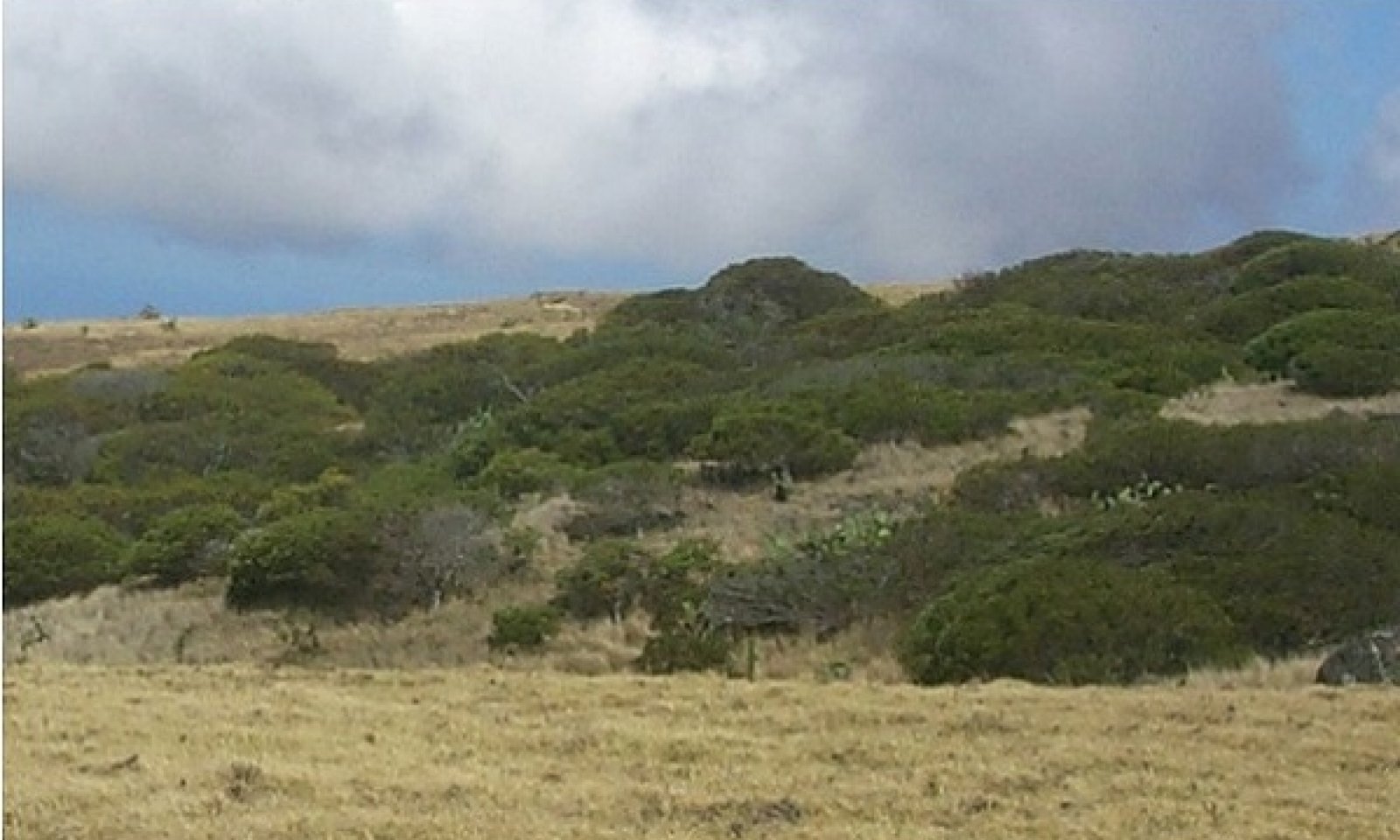

Natural Resources
Conservation Service
Ecological site VX160X01X503
Isothermic Forest
Accessed: 12/21/2025
General information
Provisional. A provisional ecological site description has undergone quality control and quality assurance review. It contains a working state and transition model and enough information to identify the ecological site.
MLRA notes
Major Land Resource Area (MLRA): 160X–Subhumid and Humid Intermediate and High Mountain Slopes
This MLRA occurs in the State of Hawaii on the Big Island of Hawaii and to a small extent on Maui. Elevation ranges from 1000 to 9000 feet (300 to 2725 meters). Slopes are moderate to steep. Topography is sloping to hilly, and cinder cones are common. Lava flows are basaltic or andesitic aa or pahoehoe lava. Aa may form outcrops at higher elevations, but most of the area is covered with material weathered from deep volcanic ash. Areas of volcanic sand and gravel alluvium exist. Average annual precipitation ranges from 20 to 75 inches (500 to 1875 millimeters). Most of the rainfall occurs during kona storms from November through March. In some areas afternoon fog accumulation at higher elevations adds significant moisture to the soil by fog drip and also ameliorates evapotranspiration. Average annual air temperatures range from 50 to 71 degrees F (10 to 20 degrees C), with little seasonal variation. Strong winds are frequent in the saddle between Mauna Kea and Kohala volcanoes. The dominant soil order is Andisols with an isomesic soil temperature regime and ustic or udic soil moisture regime. Native vegetation consists of forests and rangelands that can include medium to tall statured forests, savannas, and grasslands.
Classification relationships
This ecological site occurs within Major Land Resource Area (MLRA) 160 - Subhumid and Humid Intermediate and High Mountain Slopes.
Ecological site concept
This ecological site exists on the southwest-facing slopes of Kohala, mauka and makai of the Waimea-Hawi Road (Rte. 250), and on the west-facing slopes of Mauna Kea to the south of Waimea along the upper highway (Rte. 190)through the deep volcanic ash soils to south of Waikoloa Road to the young lava flows. Large parts of it are on private lands managed for livestock grazing. The State of Hawaii and State Division of Hawaiian Homelands own large areas also, and some parts are on the US Army Pohakuloa Training Area. Small, restored examples of the Reference State are found on State and private lands in Kohala, both mauka and makai of the Waimea-Hawi highway.
The central concept of the Isothermic Forest is of well drained, shallow to very deep Andisols formed in deposits of volcanic ash ranging from 60,000 to 500,000 years old. Annual air temperatures and rainfall create warm (isothermic), seasonally dry (ustic to torric) soil conditions. Overstory trees are short to medium in stature (16 to 26 feet; 5 to 8 meters). Koaia (Acacia koaia), a relative of koa (Acacia koa) but with shorter stature, smaller leaves (actually phyllodes), and harder wood, is restricted (at least on the Big Island) to this ecological site. Some other common overstory species are lama (Diospyros sandwicensis), wiliwili (Erythrina sandwicensis), mamani (Sophora chrysophylla), naio (Myoporum sandwicense), sandalwood (Santalum ellipticum), and kauila (Colubrina oppositifolia). Many native shrub, vine, forb, fern, grass, and sedge species inhabit this ecological site.
Associated sites
| VX160X01X502 |
Isomesic-Cool Isothermic Forest F160XY502 Isomesic-Cool Isothermic Forest is a tall stature forest with koa overstory that borders F160XY153 to the east on Mauna Kea in cooler, moister, less windy areas. |
|---|---|
| VX164X01X500 |
Volcanic Ash Forest F164XY500 Volcanic Ash Forest is a medium stature rain forest bordering F160XY503 at higher elevations on Kohala Mountain. |
Similar sites
| VX161B01X500 |
Ustic Isothermic Forest F161BY500 Ustic Isothermic Forest has similar vegetation to F160XY503 but lacks koaia. It borders F160XY503 to the south, and is on rocky soils with organic and mineral parent materials. |
|---|
Table 1. Dominant plant species
| Tree |
(1) Acacia koaia |
|---|---|
| Shrub |
Not specified |
| Herbaceous |
Not specified |
Legacy ID
F160XY503HI
Physiographic features
This ecological site occurs on volcanic ash deposited over lava flows on sloping mountainsides of shield volcanoes. Lava flows are aa (loose, cobbly) or pahoehoe (smooth, relatively unbroken).
Table 2. Representative physiographic features
| Landforms |
(1)
Shield volcano
(2) Mountain slope |
|---|---|
| Flooding frequency | None |
| Ponding frequency | None |
| Elevation | 900 – 4,000 ft |
| Slope | 60% |
| Water table depth | 60 in |
| Aspect | SW, W |
Climatic features
Average annual precipitation in this ecological site ranges from 20 to 40 inches (500 to 1000 mm). Extremes of average annual precipitation may range as low as 10 inches (250 mm) and as high as 50 inches (1270 mm). Most of the precipitation occurs from October through April.
Average annual temperatures range from 60 to 68 degrees F (15 to 20 degrees C) with extremes as low as 54 degrees F (12 degrees C) and as high as 71 degrees F(22 degrees C).
Table 3. Representative climatic features
| Frost-free period (average) | 0 days |
|---|---|
| Freeze-free period (average) | 0 days |
| Precipitation total (average) | 0 in |
Figure 1. Annual precipitation pattern
Figure 2. Annual average temperature pattern
Influencing water features
There are a few small streams flowing at the bottoms of very deep gulches; these streams have no influence on most of the ecological site.
Gulches and gullies can carry large amounts of water during heavy rainstorms for short periods of time.
Soil features
Soils in this ecological site are mineral soils formed from volcanic ash deposited over lava. Kamakoa soils are in flood plains that contain soils weathered from alluvial volcanic ash. Soil temperature regimes are isothermic. Soil moisture regimes are ustic (in most years, dry for more than 90 cumulative days but less than 180 days), or in some cases, torric (dry in all parts for more than half of the cumulative days per year when the soil temperature at a depth of 50 cm from the soil surface is above 5 C; and moist in some or all parts for less than 90 consecutive days when the soil temperature at a depth of 50 cm is above 8 C.).
Kamakoa soils have accumulations of calcium carbonate in subsurface horizons, as well as higher salinity and sodium adsorption ratio than other soils in this ecological site. These conditions occur at depths below 34 inches (85 cm), so are unlikely to greatly affect plant growth conditions.
The volcanic ash soils of the Island of Hawaii are derived mostly from basaltic ash that varies relatively little in chemical composition (Hazlett and Hyndman 1996; Vitousek 2004)). Most of these volcanic ash soils are classified as Andisols, which have these general management characteristics: ion exchange capacity that varies with pH, but mostly retaining anions such as nitrate; high phosphorus adsorption, which restricts phosphorus availability to plants; excellent physical properties (low bulk density, good friability, weak stickiness, stable soil aggregates) for cultivation, seedling emergence, and plant root growth; resistance to compaction and an ability to recover from compaction following repeated cycles of wetting and drying; and high capacity to hold water that is available to plants. These characteristics are due to the properties of the parent material, the clay-size noncrystalline materials formed by weathering, and the soil organic matter accumulated during soil formation (Shoji et al. 1993).
Andisols formed on pahoehoe lava can be very shallow to very deep. Pahoehoe is referred to as a “lithic contact,” which is a boundary between soil and underlying material that is coherent, continuous, difficult to dig with a spade, and contains few cracks that can be penetrated by roots (Soil Survey Staff 1999). Pahoehoe is typically very limiting to root penetration due to the spacing and size of cracks. However, this characteristic of pahoehoe is variable, and there are many instances of stands of large trees growing on very shallow and shallow ash soils over pahoehoe.
The lava rock fragments that constitute aa range in size from gravel (2 mm to 76 mm, or up to 3 inches) to stones (250 mm to 600 mm, or 10 to 25 inches), but are primarily gravel and cobbles (76 mm to 250 mm, or 3 to 10 inches). Below the layer of rock fragments is massive lava called “bluerock.” The interstices between rock fragments of Andisols formed in aa are filled with soil from the surface to the blue rock at the bottom of the soil. Some Andisols in aa have few or no rock fragments in the upper horizons, while others may have large amounts of rock fragments in all horizons and on the soil surface.
Soils that are moderately deep (20 to 40 inches, or 50 to 100 cm) or deeper over underlying lava appear to present few or no limits on native, pasture, or weedy vegetation, and it seems to make no difference whether the lava rock is pahoehoe or aa. However, these soils may present some tillage difficulties when formed in aa and containing significant amounts of coarse rock fragments near the surface. Very shallow and shallow ash soils over pahoehoe are sometimes ripped to break up the underlying lava and create a deeper rooting zone.

Figure 3. Puu Pa soil.
Table 4. Representative soil features
| Parent material |
(1)
Basaltic volcanic ash
–
basalt
|
|---|---|
| Surface texture |
(1) Medial very fine sandy loam (2) Silt loam |
| Family particle size |
(1) Loamy |
| Drainage class | Well drained to somewhat excessively drained |
| Permeability class | Moderate to rapid |
| Soil depth | 10 – 60 in |
| Surface fragment cover <=3" | 25% |
| Surface fragment cover >3" | 25% |
| Available water capacity (0-40in) |
1.8 – 10.8 in |
| Calcium carbonate equivalent (0-40in) |
2% |
| Electrical conductivity (0-40in) |
2 mmhos/cm |
| Sodium adsorption ratio (0-40in) |
5 |
| Soil reaction (1:1 water) (0-40in) |
5.9 – 9.4 |
| Subsurface fragment volume <=3" (Depth not specified) |
40% |
| Subsurface fragment volume >3" (Depth not specified) |
90% |
Ecological dynamics
The information in this ecological site description (ESD), including the state-and-transition model (STM), was developed using archaeological and historical data, professional experience, and scientific studies. The information is representative of a complex set of plant communities. Not all scenarios or plants are included. Key indicator plants, animals, and ecological processes are described to inform land management decisions.
States and community phases within this ecological site were differentiated by inspection of data; ordination programs were not available. They were verified by professional consensus and consistent examples in the field.
Natural Disturbances
There have been no lava flows or heavy volcanic ash flows on this ecological site that are recent enough to have affected the current vegetation and soils. It is possible that strong storms may sometimes cause minor windthrow of trees. Wildfires started by lightning rarely may affect this ecological site.
Human Disturbances
Human-related disturbances have been much more important than natural disturbances in this ecological site since the arrival of Polynesians and, later, Europeans. This is reflected in the State and Transition Model Diagram.
Humans arrived in the Hawaiian Islands 1200 to 1500 years ago. Their population gradually increased so that by 1600 AD at least 80% of all the lands in Hawaii below about 1500 feet (roughly 500 meters) in elevation had been extensively altered by humans (Kirch 1982); some pollen core data suggest that up to 100% of lowlands may have been altered (Athens 1997). By the time of European contact late in the 18th century, the Polynesians had developed high population densities and placed extensive areas under intensive agriculture (Cuddihy and Stone 1990).
Prehistoric native lowland forest disturbance can be attributed to clearing for agriculture by hand or by fire, introduction of new plants, animals, possibly plant diseases, and wood harvesting. The introduced Pacific rat would have eaten bird eggs, invertebrates, and the seeds of native plants (Athens 1997).
After the arrival of Europeans, documentary evidence attests to accelerated and extensive deforestation, erosion, siltation, and changes in local weather patterns (Kirch 1983) due to more intensive land use, modern tools, and introduction of more plant, animal, and microbe species.
The Polynesians introduced dogs, Pacific rats, and small pigs to the islands. After European discovery, cattle, sheep, horses, goats, and larger European pigs were introduced in the final decades of the 18th century. These animals ranged free on the islands, becoming very numerous and destructive by the early decades of the 19th century. Additionally, packs of feral dogs had become established, as confirmed by reports of their depredations on sheep. By 1851, records reported severe overstocking of pastures, lack of fences, and large numbers of feral livestock (Henke 1929).
In ancient and early historic times, large parts of this ecological site between elevations of 1700 and 3000 feet (520 and 925 meters) was under intensive use by humans. Based on archaeological evidence, the Waimea region supported an extensive, irrigated, agricultural field system. Additionally, some areas were regularly burned to produce grasses for thatching (pili lands) (Clark and Kirch 1983). Phytolith evidence from archaeological sites indicates that trees and shrubs were common prior to Hawaiian settlement (Welch 1983). Some areas not within the field system would have been forest interspersed with scattered agriculture and residential areas (McEldowney 1983).
Through the 20th and into the 21st centuries, increases in human populations with attendant land development, as well as accelerated introduction of non-native mammals, birds, reptiles, amphibians, invertebrates, plants, and microorganisms, have brought about dramatic changes to wild ecosystems in Hawaii. Much of the original forest of this ecological site has been cleared and planted with introduced grasses for livestock grazing, and the remaining native plant stands have been highly disturbed.
Large amounts of sandalwood (Santalum spp.) were harvested and shipped to China in the early 1800s. Most of the sandalwood had been harvested by the 1830s (Maly and Maly 2004).
Most of the Polynesian agricultural fields were abandoned in historic times. Abandonment was followed by soil erosion by wind and water. A new layer of soils, probably by aeolian deposits, later covered the former agricultural areas (Clark 1983). By the second quarter of the 19th Century, immense herds of livestock were present in the area. Throughout the middle and late 1800s, efforts at control of the introduced herbivores continued, but with only minimal success (Henke 1929).
Since the loss of the original forests, most of this ecological site has been utilized by livestock. Originally, the animals were feral or semi-feral. Today, the area is fenced and managed primarily for cattle. Kikuyugrass (Pennisetum clandestinum) has been planted and is the desired forage species. Since its introduction in 1926 and rapid spread in the 1960s, crimson fountaingrass (Pennisetum setaceum) has come to dominate large areas. Fountaingrass provides good forage but is extremely susceptible to intense wildfires, which accounts for its continued dominance.
State and transition model
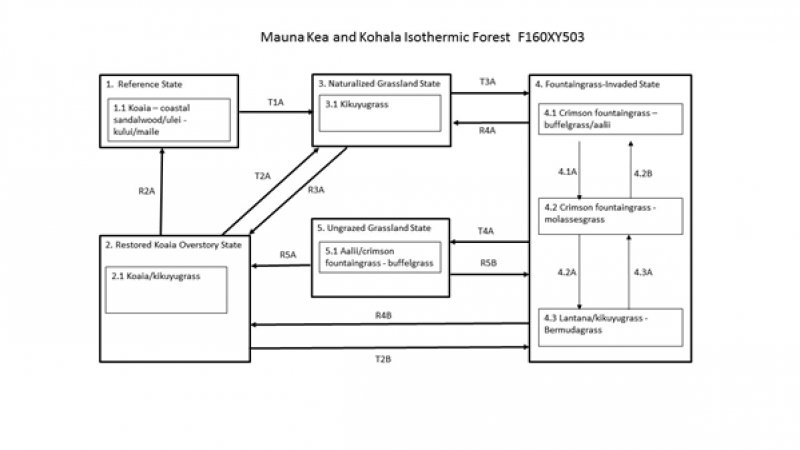
Figure 4. STM F160XY503
More interactive model formats are also available.
View Interactive Models
More interactive model formats are also available.
View Interactive Models
Click on state and transition labels to scroll to the respective text
Ecosystem states
States 2 and 5 (additional transitions)
State 1 submodel, plant communities
State 2 submodel, plant communities
State 3 submodel, plant communities
State 4 submodel, plant communities
State 5 submodel, plant communities
State 1
Reference State
This state consists of one community phase. Fully intact examples of this community no longer exist. This description is compiled from field observations of remnant sites, restored protected sites, isolated plants on disturbed sites, and historical accounts. Some evidence of the reference community has been gleaned from examination of remnant vegetation in shallow ravines. It is thought that the species found in these ravines is similar to those that previously existed on the uplands (McEldowney 1983). The largest remnant example has a high percent canopy cover of koaia (Acacia koaia). This may be due to the ability of koaia to reproduce and grow quickly in disturbed, light-rich situations when protected from browsing animals. The original community may have had less koaia cover and more cover of slower-growing native dry forest trees. Remnant koaia stands exist currently only on Kohala. There are accounts of koaia having been present in the middle of the 20th century on the areas of this ecological site that are on the slopes of Mauna Kea (Billy Paris, rancher, personal communication). There also are a few naturally-occurring koaia on older soils on Puuanahulu near Puuwaawaa, in the southern extreme of this ecological site. Soils, elevations, and climate are very similar along the contours from Kohala to Puuwaawaa except where recent (1500-3000 years old) Mauna Loa lava flows have overrun the older Mauna Kea soils just to the north of Puuanahulu; these younger flows form part of ecological site F161BY500 Ustic Isothermic Forest). These factors support the hypothesis that this ecological site existed on older, ash-derived soils from Kohala to Puuanahulu prior to human disturbance. Analysis of prehistoric land snail shells suggests that much of the original vegetation may have been similar to the xerophytic forest found near Puuwaawaa (Christensen 1983). Koa (Acacia koa) is found at higher elevations on Mauna Kea where this ecological site merges into F160XY502 Isomesic-Cool Isothermic Forest. Surprisingly, a few individual hapuu (Cibotium glaucum) were observed along small gulches within grassland areas of this ecological site on Mauna Kea. Typical dryland species such as Myrsine lanaiensis and Sophora chrysophylla occurred in the same area.
Community 1.1
Koaia - coastal sandalwood/`ulei - kului/maile

Figure 5. Fenced example of Reference community phase. 08/22/06 D Clausnitzer MU418
The hypothetical appearance of the Reference community phase is an open to nearly closed canopy of low to medium height (15-25 feet; 4.5 to 8 meters) trees, a shrub understory, and a ground layer of vines, herbs, and grasses. High winds are frequent, which partly may account for the presence of koaia rather than koa (Acacia koa) in this ecological site. Koaia has smaller stature, smaller phyllodes, and harder wood than koa. This ecological site contains many species typical of other low to medium elevation dry Hawaiian forests. It is possible that this forest was more diverse in its original state and that koaia was not as dominant as it is on the sites now remaining. Standing koaia wood volume in the largest remnant stand on Kohala is in the range of 250-1000 cubic feet per acre.
Forest overstory. Much of this ecological site occupies the leeward slope of Kohala, which has one of the steepest rainfall and temperature gradients on earth. At higher, moister extremes, plant density and stature would have been greater than at the lower, drier extremes. Species such as ohia lehua (Metrosideros polymorpha), broadleaf papala (Charpentiera obovata), papala kepau or Australasian catchbirdtree (Pisonia brunoniana), and olopua or Hawaiian olive (Nestegis sandwicensis) would have been more abundant in the moister areas, and species such as wiliwili (Erythrina sandwicensis), ohe makai (Reynolds sandwicensis), and Hawaii hala pepe (Pleomele hawaiiensis) would have been more abundant in the drier areas (McEldowney 1983).
Forest understory. The understory contains a diverse assemble of shrub, vine, forb, fern and grass/grasslike species. Currently, the most common species are: the shrubs ulei or Hawaii hawthorn (Osteomeles anthyllidifolia), aalii or Florida hopbush (Dodonaea viscosa), and kului or Hawaii rockwort (Nototrichium sandwichense); the vines oceanblue morning glory (Ipomoea indica) and huehue or queen coralbead (Cocculus orbiculatus); and western brackenfern (Pteridium aquilinum).
Table 5. Soil surface cover
| Tree basal cover | 2-3% |
|---|---|
| Shrub/vine/liana basal cover | 1-2% |
| Grass/grasslike basal cover | 1-2% |
| Forb basal cover | 0.1-1.0% |
| Non-vascular plants | 0.5-1.0% |
| Biological crusts | 0.0-0.1% |
| Litter | 90-95% |
| Surface fragments >0.25" and <=3" | 0.5-1.0% |
| Surface fragments >3" | 0.5-1.0% |
| Bedrock | 0% |
| Water | 0% |
| Bare ground | 0.5-1.0% |
Table 6. Canopy structure (% cover)
| Height Above Ground (ft) | Tree | Shrub/Vine | Grass/ Grasslike |
Forb |
|---|---|---|---|---|
| <0.5 | 0% | 0% | 0% | 0% |
| >0.5 <= 1 | 0-1% | 0-1% | 0% | 0-1% |
| >1 <= 2 | 0-1% | 1-2% | 1-2% | 1-2% |
| >2 <= 4.5 | 3-5% | 5-10% | – | 1-2% |
| >4.5 <= 13 | 5-10% | 15-20% | – | – |
| >13 <= 40 | 65-70% | – | – | – |
| >40 <= 80 | – | – | – | – |
| >80 <= 120 | – | – | – | – |
| >120 | – | – | – | – |
State 2
Restored Koaia Overstory State
This state consists of one community phase. It is able to exist only when protected from ungulates, wildfire, and weed suppression. Restoration of this state is being carried out successfully currently on a number of sites. The initial requirement for restoration is a properly designed, well maintained fence capable of excluding all ungulates. Suppression of introduced grass cover by herbicides and dense plantings of native trees, shrubs, and vines is necessary. Fire protection must be provided by establishing and maintaining a fuelbreak; controlled grazing outside the planting area is helpful with this. Irrigation of native plantings has been found to be very useful in the first six to twelve months of establishment. Transitions to grassland states (State 3 or 4) will proceed without continued management and protection.
Community 2.1
Koaia/kikuyugrass
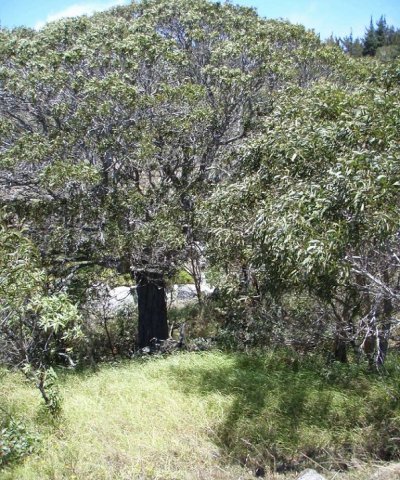
Figure 6. Protected koaia trees in grassland. 04/14/09 D Clausnitzer MU459
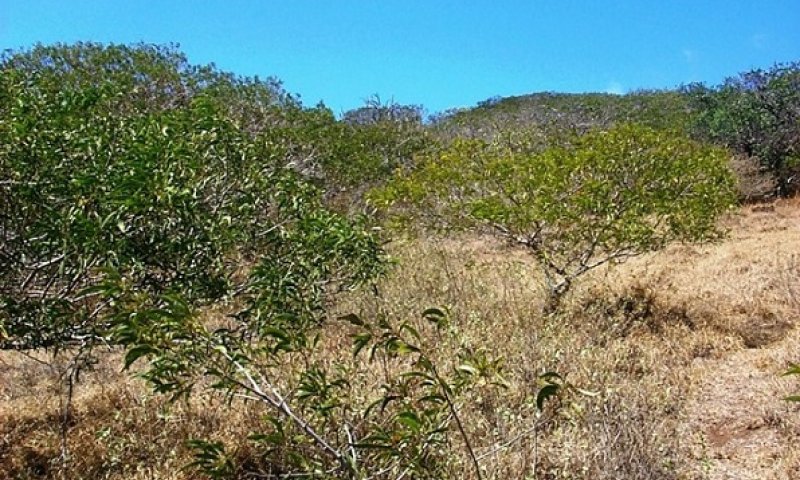
Figure 7. Protected koaia trees. 08/09/06 D Clausnitzer MU418
This community phase is heavily dominated by koaia, although many other native tree species are present. Koaia probably has regrown more quickly than the other native tree species due to high light levels and koaia’s ability to fix nitrogen. With replanting and growth of more shade-tolerant tree species, koaia may become less abundant over time. The ground cover of this site is dominated by introduced grasses.
Forest overstory. The overstory potentially consists of approximately 25 native tree species.
Forest understory. The understory potentially contains about 11 shrub species, four forb species, three vine species, two fern species, and three grass/grasslike species.
Table 7. Soil surface cover
| Tree basal cover | 1-2% |
|---|---|
| Shrub/vine/liana basal cover | 0.1% |
| Grass/grasslike basal cover | 20-25% |
| Forb basal cover | 0.1-0.2% |
| Non-vascular plants | 0% |
| Biological crusts | 0% |
| Litter | 70-80% |
| Surface fragments >0.25" and <=3" | 0.1-1.0% |
| Surface fragments >3" | 0.1-1.0% |
| Bedrock | 0% |
| Water | 0% |
| Bare ground | 5-10% |
Table 8. Woody ground cover
| Downed wood, fine-small (<0.40" diameter; 1-hour fuels) | – |
|---|---|
| Downed wood, fine-medium (0.40-0.99" diameter; 10-hour fuels) | – |
| Downed wood, fine-large (1.00-2.99" diameter; 100-hour fuels) | – |
| Downed wood, coarse-small (3.00-8.99" diameter; 1,000-hour fuels) | 0-1% |
| Downed wood, coarse-large (>9.00" diameter; 10,000-hour fuels) | – |
| Tree snags** (hard***) | – |
| Tree snags** (soft***) | – |
| Tree snag count** (hard***) | 0-1 per acre |
| Tree snag count** (hard***) |
* Decomposition Classes: N - no or little integration with the soil surface; I - partial to nearly full integration with the soil surface.
** >10.16cm diameter at 1.3716m above ground and >1.8288m height--if less diameter OR height use applicable down wood type; for pinyon and juniper, use 0.3048m above ground.
*** Hard - tree is dead with most or all of bark intact; Soft - most of bark has sloughed off.
Table 9. Canopy structure (% cover)
| Height Above Ground (ft) | Tree | Shrub/Vine | Grass/ Grasslike |
Forb |
|---|---|---|---|---|
| <0.5 | 0% | 0% | 10-20% | 0-1% |
| >0.5 <= 1 | 0% | 0-1% | 50-70% | 0-1% |
| >1 <= 2 | 0-1% | 1-1% | 5-10% | 0-1% |
| >2 <= 4.5 | 3-5% | 1-1% | – | – |
| >4.5 <= 13 | 50-60% | 1-1% | – | – |
| >13 <= 40 | 5-10% | 0% | – | – |
| >40 <= 80 | – | – | – | – |
| >80 <= 120 | – | – | – | – |
| >120 | – | – | – | – |
State 3
Naturalized Grassland State
This state consists of one plant community dominated by kikuyugrass (Pennisetum clandestinum). This species, which is both rhizomatous and stoloniferous is adapted to herbivory and is very competitive with other vegetation. It is still dominant in higher, moister areas of this ecological site. However, with excessive disturbance from trampling, grazing, and/or fire, this state will transition to State 4 Fountaingrass Invaded, where kikuyugrass gives way to fountaingrass and other grass species. In the absence of fountaingrass, kikuyugrass probably would be the dominant pasture grass in lower, drier areas of this ecological site where fountaingrass has successfully invaded. Guineagrass (Urochloa maxima) is present in very small amounts, mainly along roadsides and in drainages where moisture is more abundant. Guineagrass is very heavily grazed by livestock and is less tolerant of grazing than kikuyugrass. Invasion by black wattle (Acacia mearnsii), a weedy, introduced tree species, is occurring in higher elevation, moister areas of this state.
Community 3.1
Kikuyugrass
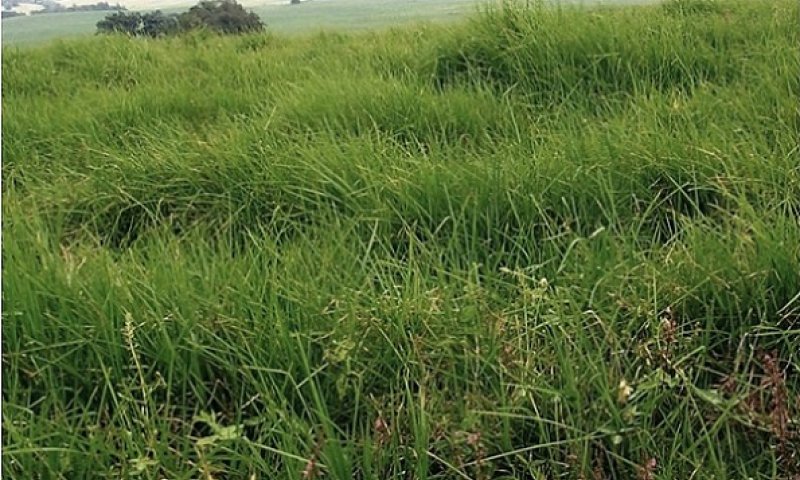
Figure 8. Kikuyugrass. D Clausnitzer generic photo
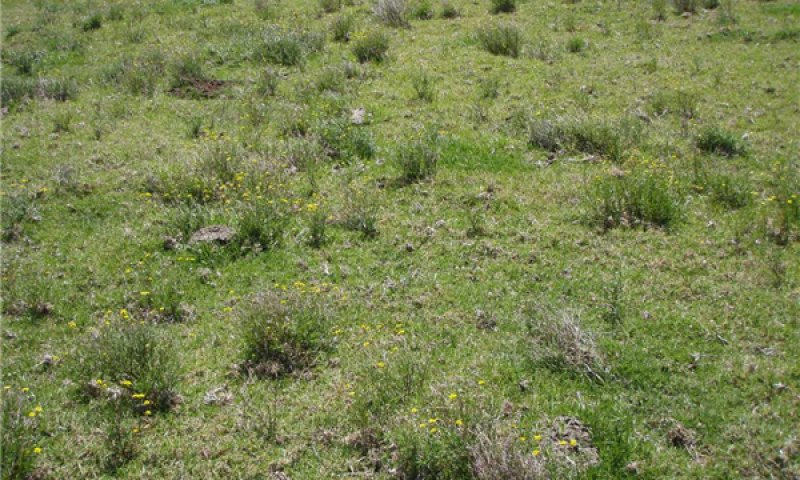
Figure 9. Grazed kikuyugrass. D Clausnitzer generic photo
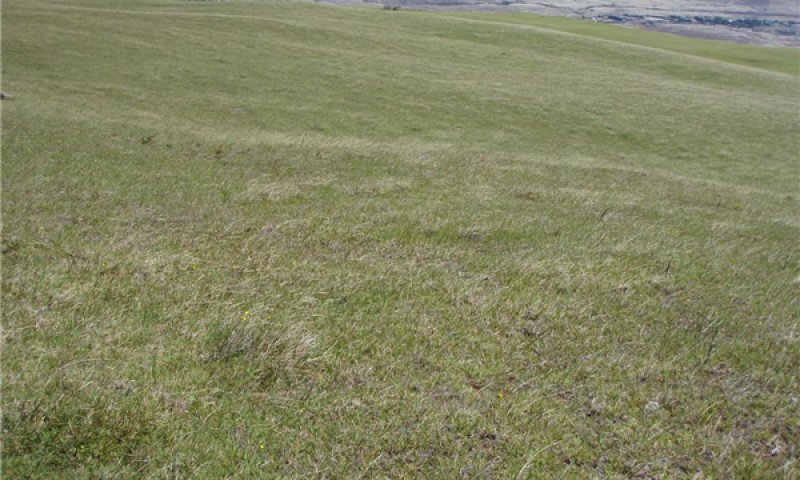
Figure 10. Pangolagrass with some dallisgrass. D Clausnitzer generic photo
This is the preferred community phase for livestock grazing. With good management, some forage legumes will persist. The presence of livestock and the competitiveness of kikuyugrass under good management both tend to minimize the abundance of other species.
Forest overstory. Isolated, mature koaia trees may persist in places; their canopies typically have been browsed to the height reachable by livestock and they do not reproduce successfully.
Forest understory. Kikuyugrass comprises most of the productivity of this community phase. Other grass species are present in small amounts. With the exception of Natal redtop (Melinis repens), these other grasses are poor forages. With careful management, small amounts of the legume forages common vetch (Vicia saliva), white clover (Trifolium repens), kaimi clover (Desmodium canum), and glycine (Neonotonia wightii) can persist. A number of weedy forb species are present. Scattered native shrubs may be present, including ilima (Sida fallax), uhaloa (Waltheria indica), akia (Wikstroemia pulcherrima), and aalii (Dodonaea viscosa). Weedy, introduced shrub and tree species are present in small amounts and stature, including christmasberry (Schinus terebinthifolius), black wattle (Acacia mearnsii), bush indigo (Indigofera suffruticosa), and lantana (Lantana camara).
Figure 11. Annual production by plant type (representative values) or group (midpoint values)
State 4
Fountaingrass-Invaded State
This state consists of three community phases that have continuous grass cover with no or very few trees, shrubs, and forbs. Fountaingrass (Pennisetum setaceum) may form nearly monospecific stands or may be interspersed with islands of buffelgrass (Pennisetum ciliare). Koa haole (Leucaena leucocephala), a leguminous browse species, should thrive in this environment, as evidenced by its abundance on sites protected from livestock and wildfire. However, it typically is present only in very small amounts in grazed pastures. With continuous heavy grazing, particularly by cattle, fountaingrass will decrease. Koa haole and bush indigo (Indigofera suffruticosa) also will decrease under heavy grazing pressure. Increasers include jaraguagrass or thatchinggrass (Hyparrhenia rufa), barbwiregrass (Cymbopogon refractus), molassesgrass (Melinis minutiflora), Natal redtop or rose Natal grass (Melinis repens), bluestems (Bothriochloa spp.), and lesser amounts of buffelgrass and weedy forbs. With severe deterioration, shrubby species such as lantana (Lantana camara) and apple of sodom (Solanum linnaeaum) increase. Shortgrasses such as Bermudagrass (Cynodon dactylon), kikuyugrass, low-vigor buffelgrass, and weedy annual forbs become more abundant, as well as lesser amounts of pricklypear cactus or Barbary fig (Opuntia ficus-indica). Pricklypear cactus abundance has been limited by an introduced biocontrol insect. Native aalii (Dodonaea viscosa) can increase with exclusion of livestock grazing or lack of wildfire. The forage potential of the site is reduced by the increased canopy cover of this native shrub.
Community 4.1
Crimson fountaingrass - buffelgrass/`a`ali`i
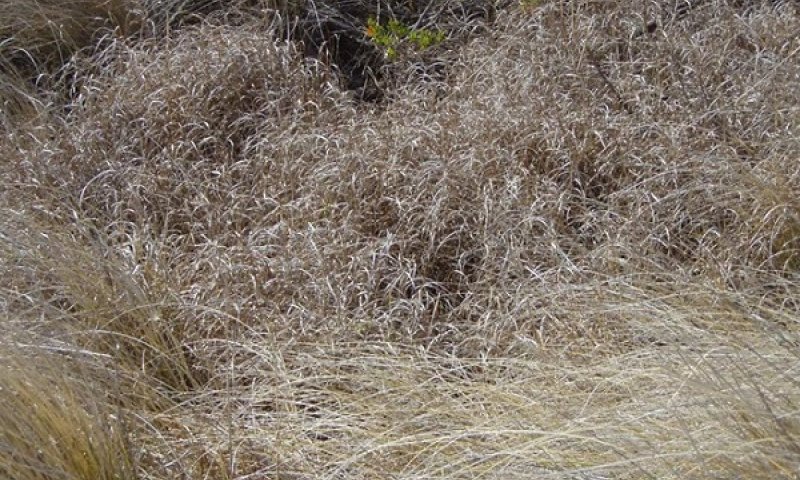
Figure 12. Mix of fountaingrass and buffelgrass. D Clausnitzer generic photo
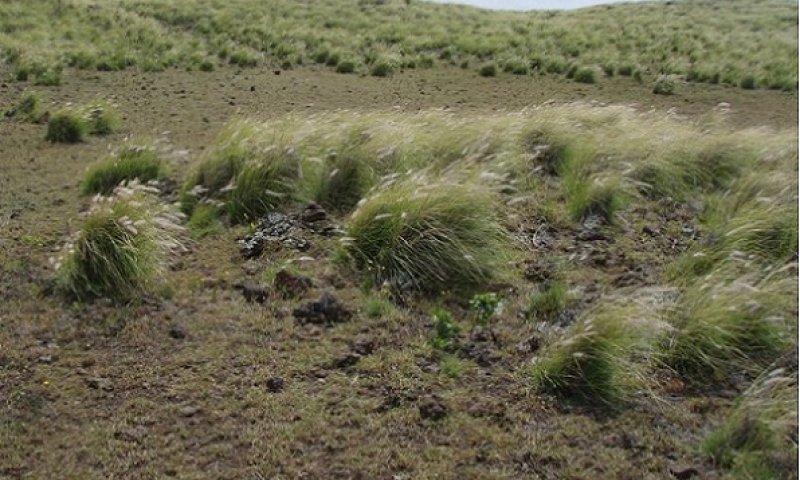
Figure 13. Fountaingrass. D Clausnitzer generic photo
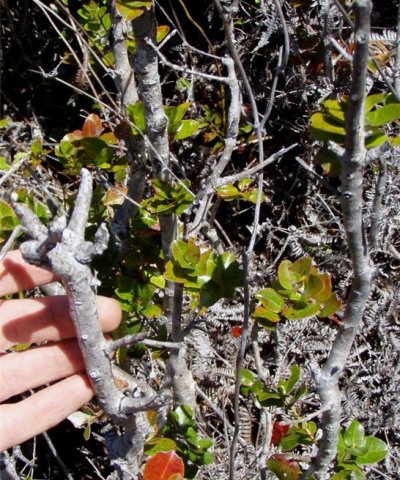
Figure 14. Browsed ohia lehua. D Clausnitzer generic photo
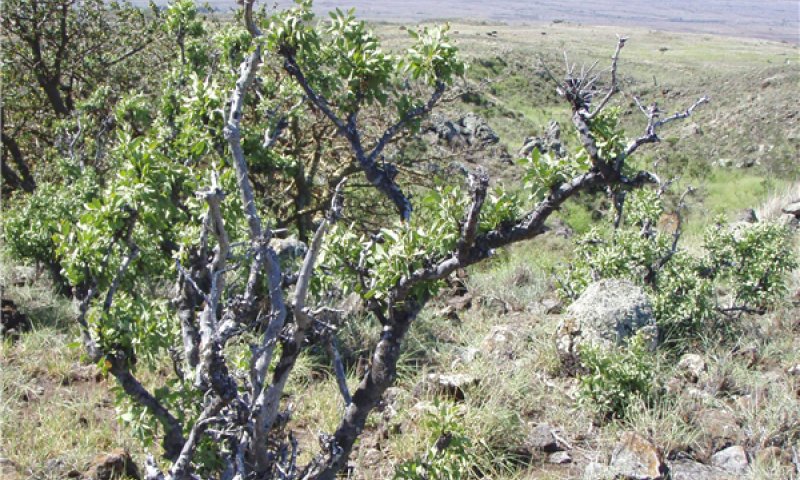
Figure 15. Browsed sandalwood. D Clausnitzer generic photo
This plant community is dominated by an almost continuous cover of fountaingrass interspersed with patches of buffelgrass. Buffelgrass is a more desirable forage species and is usually overgrazed in preference to fountaingrass. Very few trees, shrubs, vines, or forbs are found in this plant community. Koa haole and glycine (Neonotonia wightii), both desirable forage species, often are present outside the fence lines of grazed fountaingrass pastures.
Forest overstory. Typically little or no overstory vegetation exists in this community phase. Planted eucalyptus stands exist in some areas.
Forest understory. This community phase is dominated by crimson fountaingrass, which is 70 to 95 percent of total composition by weight. Buffelgrass makes up 0 to 10 percent of total composition.
Figure 16. Annual production by plant type (representative values) or group (midpoint values)
Community 4.2
Crimson fountaingrass - molassesgrass
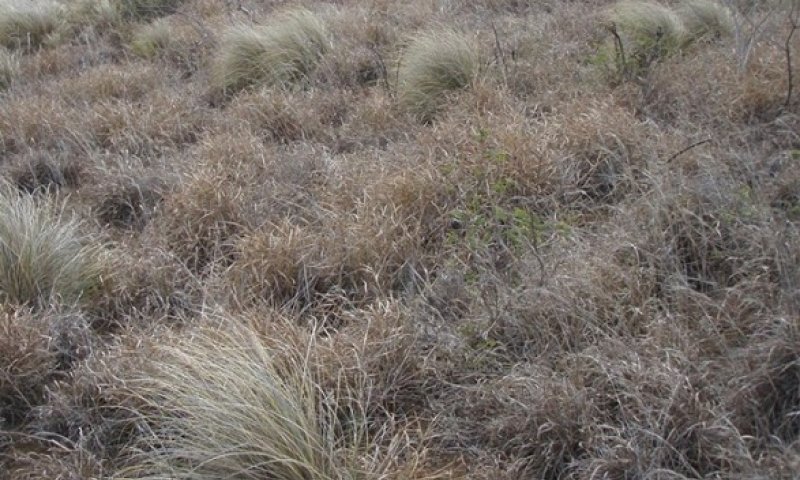
Figure 17. Fountaingrass with molassesgrass. D Clausnitzer generic photo
This community phase consists of lower-value grass species that become abundant upon continuous heavy grazing of fountaingrass. Further overgrazing exacerbates this process, causing a community change to phase 4.3.
Forest overstory. Typically little or no overstory vegetation exists in this community phase. Planted eucalyptus stands exist in some areas.
Forest understory. Jaraguagrass or thatchinggrass (Hyparrhenia rufa), barbwiregrass (Cymbopogon refractus), molassesgrass (Melinis minutiflora), Natal redtop or rose Natal grass (Melinis repens), beardgrasses (Bothriochloa spp.), and lesser amounts of low-vigor buffelgrass (Pennisetum ciliare) dominate the understory.
Table 10. Soil surface cover
| Tree basal cover | 0% |
|---|---|
| Shrub/vine/liana basal cover | 0% |
| Grass/grasslike basal cover | 20-25% |
| Forb basal cover | 0% |
| Non-vascular plants | 0% |
| Biological crusts | 0% |
| Litter | 30-40% |
| Surface fragments >0.25" and <=3" | 3-5% |
| Surface fragments >3" | 0.5-1.0% |
| Bedrock | 0% |
| Water | 0% |
| Bare ground | 25-30% |
Table 11. Canopy structure (% cover)
| Height Above Ground (ft) | Tree | Shrub/Vine | Grass/ Grasslike |
Forb |
|---|---|---|---|---|
| <0.5 | – | 0% | 0% | 0-1% |
| >0.5 <= 1 | – | 0% | 5-10% | 0-1% |
| >1 <= 2 | – | 1-1% | 50-60% | 0-1% |
| >2 <= 4.5 | – | 1-1% | 1-1% | 1-1% |
| >4.5 <= 13 | 0-1% | – | – | – |
| >13 <= 40 | – | – | – | – |
| >40 <= 80 | – | – | – | – |
| >80 <= 120 | – | – | – | – |
| >120 | – | – | – | – |
Community 4.3
Lantana/kikuyugrass - Bermudagrass
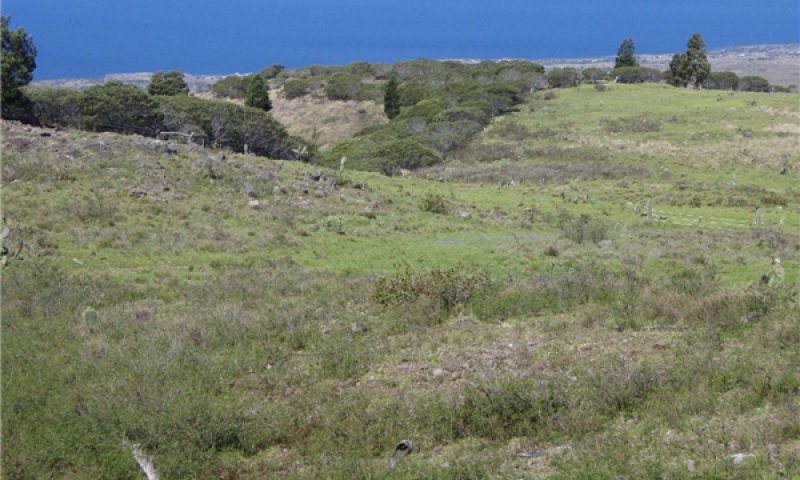
Figure 18. Weedy grassland; koaia stand in background. 08/09/06 D Clausnitzer MU418

Figure 19. Example weedy grassland. 04/14/09 D Clausnitzer MU459
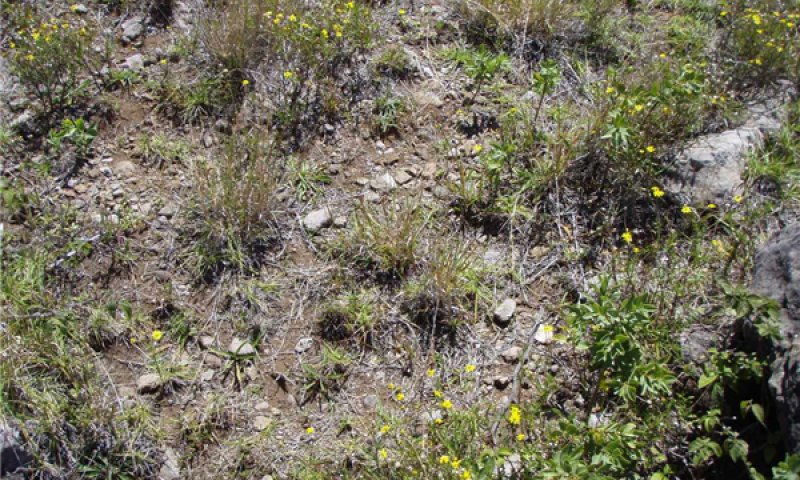
Figure 20. Closeup photo. 04/14/09 D Clausnitzer MU459
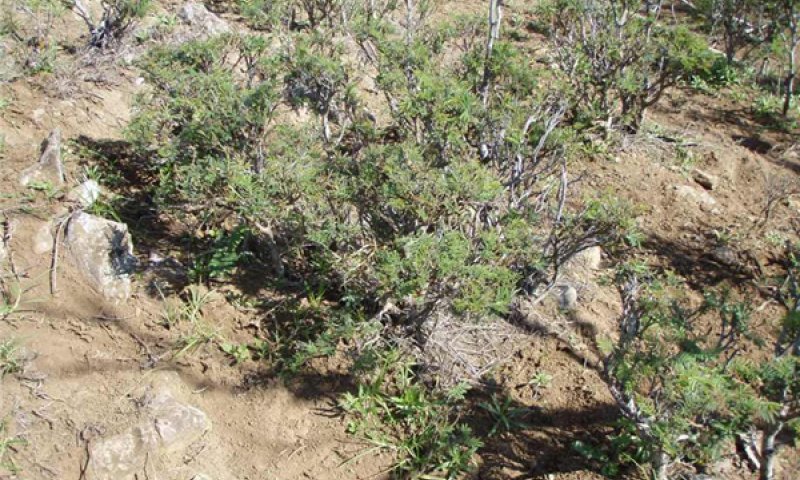
Figure 21. Bare ground. 04/14/09 MU459
This community phase consists mostly of grass species that are tolerant of grazing. These species are small perennials, rhizomatous or stoloniferous, or unpalatable to ungulates. Bare ground is extensive, so soil erosion by wind and water can be excessive.
Forest overstory. Typically little or no overstory vegetation exists in this community phase. Planted eucalyptus stands exist in some areas.
Forest understory. The most abundant grass species are remnant fountaingrass, Bermudagrass, low-vigor kikuyugrass, beardgrasses, jaraguagrass, and barbwire grass, all of which are introduced. Lantana is the most abundant shrub. Small amounts of native aalii, ilima, and uhaloa may be present.
Table 12. Soil surface cover
| Tree basal cover | 0% |
|---|---|
| Shrub/vine/liana basal cover | 0% |
| Grass/grasslike basal cover | 20-25% |
| Forb basal cover | 0% |
| Non-vascular plants | 0% |
| Biological crusts | 0% |
| Litter | 10-15% |
| Surface fragments >0.25" and <=3" | 5-10% |
| Surface fragments >3" | 0.5-1.0% |
| Bedrock | 0% |
| Water | 0% |
| Bare ground | 45-55% |
Table 13. Canopy structure (% cover)
| Height Above Ground (ft) | Tree | Shrub/Vine | Grass/ Grasslike |
Forb |
|---|---|---|---|---|
| <0.5 | – | 0-1% | 0-1% | 1-1% |
| >0.5 <= 1 | – | 0-1% | 3-5% | 1-1% |
| >1 <= 2 | – | 1-1% | 45-55% | 1-1% |
| >2 <= 4.5 | – | 3-5% | 1-2% | 0-1% |
| >4.5 <= 13 | – | – | – | – |
| >13 <= 40 | – | – | – | – |
| >40 <= 80 | – | – | – | – |
| >80 <= 120 | – | – | – | – |
| >120 | – | – | – | – |
Pathway 4.1A
Community 4.1 to 4.2


Fountaingrass cover and vigor are reduced by continuous grazing, causing it to decrease and be partially replaced by less desirable forages.
Pathway 4.2A
Community 4.2 to 4.1


This community phase changes to phase 4.3 with long-term and/or heavy continuous grazing. Species composition changes to dominance by shortgrasses such as Bermudagrass (Cynodon dactylon), low-vigor kikuyugrass (Pennisetum clandestinum), low-vigor buffelgrass (Pennisetum ciliare), weedy annual forbs, and shrubs. Bare ground increases markedly.
Pathway 4.2B
Community 4.2 to 4.1


Phase 4.2 can change to phase 4.1 by application of a prescribed grazing program that allows fountaingrass to reassume dominance. Weed control may be necessary if taller weedy forbs and/or shrubs are abundant.
Pathway 4.3A
Community 4.3 to 4.2


Community phase 4.3 can change to phase 4.2 by application of a prescribed grazing program that allows fountaingrass to reassume dominance. Herbicidal weed control may be necessary.
State 5
Ungrazed Grassland State
This state consists of one community phase. It develops from State 4 Fountaingrass-Invaded when exclusion of livestock and lack of fire allow growth of a shrub canopy consisting principally of native species. Wildfire will rapidly restore this state to State 4 Fountaingrass-Invaded.
Community 5.1
`A`ali`i/crimson fountaingrass - buffelgrass
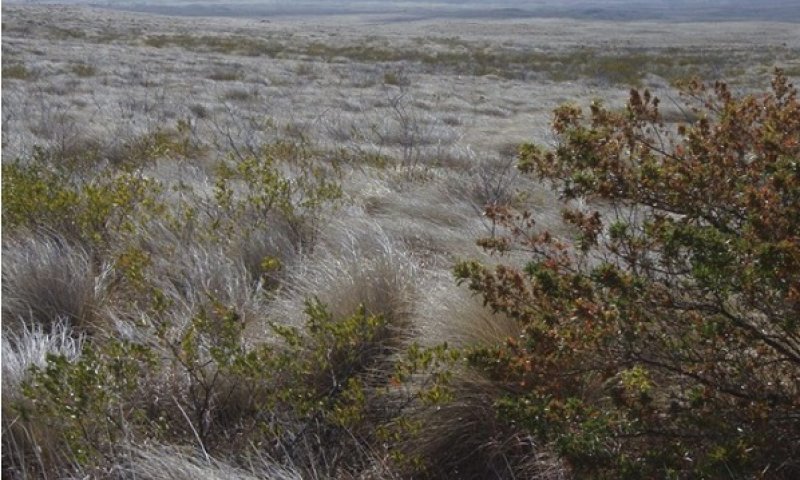
Figure 22. Fountaingrass with aalii. D Clausnitzer generic photo
The herbaceous understory is very similar to State 4 Fountaingrass-Invaded Grassland, but forage production may be reduced due to the abundance of shrubs.
Forest overstory. There typically is little or no overstory vegetation. Planted eucalyptus stands exist in some areas.
Forest understory. The shrub layer has a canopy cover of about 20 percent or more and consists primarily of the native shrub aalii (Dodonaea viscosa). Other native shrubs present, but with much less canopy cover, are yellow ilima (Sida fallax), uhaloa (Waltheria indica), akia or Kohala false ohelo (Wikstroemia pulcherrima), and aweoweo (Chenopodium oahuense). Crimson fountaingrass (Pennisetum setaceum) and buffelgrass (Pennisetum ciliare) are the most abundant grasses.
Table 14. Soil surface cover
| Tree basal cover | 0% |
|---|---|
| Shrub/vine/liana basal cover | 0.5-1.0% |
| Grass/grasslike basal cover | 20-25% |
| Forb basal cover | 0% |
| Non-vascular plants | 0% |
| Biological crusts | 0% |
| Litter | 40-50% |
| Surface fragments >0.25" and <=3" | 3-5% |
| Surface fragments >3" | 0.5-1.0% |
| Bedrock | 0% |
| Water | 0% |
| Bare ground | 20-25% |
Table 15. Canopy structure (% cover)
| Height Above Ground (ft) | Tree | Shrub/Vine | Grass/ Grasslike |
Forb |
|---|---|---|---|---|
| <0.5 | 0% | 0% | 0-1% | 0-1% |
| >0.5 <= 1 | 0% | 0% | 0-1% | 0-1% |
| >1 <= 2 | 0% | 0-1% | 60-70% | 1-1% |
| >2 <= 4.5 | 0% | 15-25% | – | – |
| >4.5 <= 13 | 0% | – | – | – |
| >13 <= 40 | – | – | – | – |
| >40 <= 80 | – | – | – | – |
| >80 <= 120 | – | – | – | – |
| >120 | – | – | – | – |
Transition T1A
State 1 to 3
The Reference State will transition to State 3 Naturalized Grassland when cleared by fire, long-term ungulate disturbance, or mechanical means. Desired forage species, typically kikuyugrass (Pennisetum clandestinum), are then established from sprigs or seed.
Restoration pathway R2A
State 2 to 1
Restoration of this state to an approximation of State 1 Reference by long term protection and management, including measures to eliminate introduced grasses in the understory.
Transition T2A
State 2 to 3
This state will transition to State 3 Naturalized Grassland if protection and management are removed. Resumption of ungulate access would destroy native understory plants, create a high browse line on native overstory plants, and eliminate native plant reproduction. Introduced plant species would rapidly reinvade the site. Wildfire could obliterate a restored site.
Transition T2B
State 2 to 4
This state will transition to State 4 Fountaingrass Invaded if protection and management are removed and fountaingrass is present nearby. Resumption of ungulate access would destroy native understory plants, create a high browse line on native overstory plants, and eliminate native plant reproduction. Introduced plant species including fountaingrass would rapidly reinvade the site. Wildfire could obliterate a restored site but not kill fountaingrass.
Restoration pathway R3A
State 3 to 2
This state can be restored to State 2 Restored Koaia Overstory. The site must be fenced to exclude all domestic and feral ungulates. A fuelbreak may be maintained around the fence line by grazing or mowing. Kikuyugrass must be killed by herbicide, followed by plantings of native trees, shrubs, and vines. Supplemental irrigation is very useful in the early stages of restoration.
Transition T3A
State 3 to 4
This state transitions to State 4 Fountaingrass Invaded with continuous livestock grazing that reduces the competitiveness of kikuyugrass, allowing eventual dominance by fountaingrass. Wildfire accelerates this pathway.
Restoration pathway R4B
State 4 to 2
This state may be restored to State 2 Restored Koaia Overstory by fencing out all ungulates, excluding fire by fuelbreaks and controlled grazing outside the fence, herbicide applications, extensive replanting of native species, and irrigation in the early stages of replanting.
Restoration pathway R4A
State 4 to 3
It may be possible to restore this state to State 3 Naturalized Grassland by fire exclusion, herbicide application, prescribed grazing, and possibly replanting kikuyugrass. Success would be more likely in higher elevation, moister areas of this ecological site. This pathway may not be feasible in lower elevation (warmer and drier) areas because kikuyugrass is less well-adapted for these areas.
Transition T4A
State 4 to 5
This state can transition to State 5 Ungrazed Grassland when livestock grazing is light or excluded and when wildfire does not occur for a number of years. The result is growth of stands of native aalii shrubs.
Restoration pathway R5A
State 5 to 2
This state may be restored to State 2 Restored Koaia by fencing out all ungulates, establishing a fuelbreak and managing grazing outside the restoration site, controlling weeds with herbicides, planting native species, and providing irrigation in the early stages of replanting.
Restoration pathway R5B
State 5 to 4
The state may be restored to State 4 Fountaingrass-Invaded by application of brush management practices or by wildfire.
Additional community tables
Table 16. Community 1.1 forest overstory composition
| Common name | Symbol | Scientific name | Nativity | Height (ft) | Canopy cover (%) | Diameter (in) | Basal area (square ft/acre) |
|---|---|---|---|---|---|---|---|
|
Tree
|
|||||||
| koaoha | ACKO2 | Acacia koaia | Native | 13–18 | 20–40 | – | – |
| wili wili | ERSA11 | Erythrina sandwicensis | Native | 13–25 | 3–5 | – | – |
| Lanai colicwood | MYLA3 | Myrsine lanaiensis | Native | 13–25 | 3–5 | – | – |
| naio | MYSA | Myoporum sandwicense | Native | 13–25 | 3–5 | – | – |
| 'ohe makai | RESA | Reynoldsia sandwicensis | Native | 13–25 | 3–5 | – | – |
| kauila | COOP | Colubrina oppositifolia | Native | 13–25 | 3–5 | – | – |
| 'ohi'a lehua | MEPO5 | Metrosideros polymorpha | Native | 13–25 | 1–2 | – | – |
| smallflower aiea | NOBR2 | Nothocestrum breviflorum | Native | 13–25 | 1–2 | – | – |
| Australasian catchbirdtree | PIBR3 | Pisonia brunoniana | Native | 13–20 | 1–2 | – | – |
| devil's-pepper | RASA3 | Rauvolfia sandwicensis | Native | 13–25 | 1–2 | – | – |
| mamani | SOCH | Sophora chrysophylla | Native | 13–20 | 1–2 | – | – |
| Hawai'i olive | NESA2 | Nestegis sandwicensis | Native | 13–20 | 1–2 | – | – |
| 'ahakea | BOTI | Bobea timonioides | Native | 13–20 | 1–2 | – | – |
| Hawai'i brushholly | XYHA | Xylosma hawaiiensis | Native | 13–25 | 1–2 | – | – |
| cheesewood | PITTO | Pittosporum | Native | 13–25 | 1–2 | – | – |
| Hawai'i hala pepe | PLHA4 | Pleomele hawaiiensis | Native | 13–20 | 1–2 | – | – |
| 'ala'a | POSA11 | Pouteria sandwicensis | Native | 13–25 | 1–2 | – | – |
| mokihana kukae moa | MEHA4 | Melicope hawaiensis | Native | 13–15 | 1–2 | – | – |
| lama | DISA10 | Diospyros sandwicensis | Native | 13–20 | 1–2 | – | – |
Table 17. Community 1.1 forest understory composition
| Common name | Symbol | Scientific name | Nativity | Height (ft) | Canopy cover (%) | |
|---|---|---|---|---|---|---|
|
Grass/grass-like (Graminoids)
|
||||||
| Pacific bentgrass | AGAV | Agrostis avenacea | Native | 1–2 | 1–2 | |
| kawelu | ERVA | Eragrostis variabilis | Native | 1–2 | 1–2 | |
| Oahu sedge | CAWA | Carex wahuensis | Native | 0.5–1 | 1–2 | |
|
Forb/Herb
|
||||||
| spreading nehe | LIVE5 | Lipochaeta venosa | Native | 1–2 | 1–2 | |
| grassland nehe | LISU6 | Lipochaeta subcordata | Native | 1–3 | 1–2 | |
| 'ihi makole | POSC9 | Portulaca sclerocarpa | Native | 0.2–0.5 | 0.1–0.5 | |
| korthal mistletoe | KORTH | Korthalsella | Native | 0.2–0.5 | 0.1–0.5 | |
|
Fern/fern ally
|
||||||
| western brackenfern | PTAQ | Pteridium aquilinum | Native | 1–2 | 0.5–1 | |
| Lyon's hacksaw fern | DOLY | Doodia lyonii | Native | 0.5–1 | 0.1–0.5 | |
|
Shrub/Subshrub
|
||||||
| Hawai'i hawthorn | OSAN | Osteomeles anthyllidifolia | Native | 1–6 | 3–5 | |
| Florida hopbush | DOVI | Dodonaea viscosa | Native | 2–6 | 3–5 | |
| Hawai'i rockwort | NOSA | Nototrichium sandwicense | Native | 2–8 | 3–5 | |
| yellow ‘ilima | SIFA | Sida fallax | Native | 1–5 | 1–2 | |
| Mauna Loa beggarticks | BIME | Bidens menziesii | Native | 2–10 | 1–2 | |
| alaweo | CHOA | Chenopodium oahuense | Native | 1–6 | 1–2 | |
| Kohala false ohelo | WIPU | Wikstroemia pulcherrima | Native | 1–3 | 1–2 | |
| blunt chaff flower | ACMU2 | Achyranthes mutica | Native | 1–2 | 1–2 | |
| cindercone isodendrion | ISHO2 | Isodendrion hosakae | Native | 1–3 | 1–2 | |
| thorny popolo | SOIN | Solanum incompletum | Native | 2–8 | 1–2 | |
| uhaloa | WAIN | Waltheria indica | Native | 1–2 | 0.5–1 | |
|
Tree
|
||||||
| lama | DISA10 | Diospyros sandwicensis | Native | 2–13 | 3–5 | |
| Hawai'i hala pepe | PLHA4 | Pleomele hawaiiensis | Native | 2–13 | 3–5 | |
| coastal sandalwood | SAEL2 | Santalum ellipticum | Native | 2–13 | 3–5 | |
| kauila | COOP | Colubrina oppositifolia | Native | 2–13 | 1–2 | |
| wili wili | ERSA11 | Erythrina sandwicensis | Native | 2–13 | 1–2 | |
| koaoha | ACKO2 | Acacia koaia | Native | 2–13 | 1–2 | |
| mokihana kukae moa | MEHA4 | Melicope hawaiensis | Native | 2–13 | 0.5–1 | |
| Lanai colicwood | MYLA3 | Myrsine lanaiensis | Native | 2–13 | 0.5–1 | |
| naio | MYSA | Myoporum sandwicense | Native | 2–13 | 0.5–1 | |
| mamani | SOCH | Sophora chrysophylla | Native | 2–13 | 0.5–1 | |
| Hawai'i roughbush | STPE3 | Streblus pendulinus | Native | 2–13 | 0.5–1 | |
| Hawai'i brushholly | XYHA | Xylosma hawaiiensis | Native | 2–13 | 0.5–1 | |
| smallflower aiea | NOBR2 | Nothocestrum breviflorum | Native | 2–13 | 0.5–1 | |
| 'ala'a | POSA11 | Pouteria sandwicensis | Native | 2–13 | 0.5–1 | |
| devil's-pepper | RASA3 | Rauvolfia sandwicensis | Native | 2–13 | 0.5–1 | |
| 'ohe makai | RESA | Reynoldsia sandwicensis | Native | 2–13 | 0.5–1 | |
| broadleaf papala | CHOB2 | Charpentiera obovata | Native | 2–13 | 0.5–1 | |
| cheesewood | PITTO | Pittosporum | Native | 2–13 | 0.5–1 | |
| Hawai'i olive | NESA2 | Nestegis sandwicensis | Native | 2–13 | 0.5–1 | |
| 'ahakea | BOTI | Bobea timonioides | Native | 2–13 | 0.5–1 | |
| po'ola | CLSA | Claoxylon sandwicense | Native | 2–13 | 0.1–0.5 | |
| 'ohi'a lehua | MEPO5 | Metrosideros polymorpha | Native | 2–13 | 0.1–0.5 | |
| Australasian catchbirdtree | PIBR3 | Pisonia brunoniana | Native | 2–13 | 0.1–0.5 | |
|
Vine/Liana
|
||||||
| Maile | ALST11 | Alyxia stellata | Native | 1–6 | 1–2 | |
| queen coralbead | COOR11 | Cocculus orbiculatus | Native | 1–5 | 1–2 | |
| oceanblue morning-glory | IPIN | Ipomoea indica | Native | 1–5 | 1–2 | |
Table 18. Community 2.1 forest overstory composition
| Common name | Symbol | Scientific name | Nativity | Height (ft) | Canopy cover (%) | Diameter (in) | Basal area (square ft/acre) |
|---|---|---|---|---|---|---|---|
|
Tree
|
|||||||
| koaoha | ACKO2 | Acacia koaia | Native | 13–18 | 0.5–1 | – | – |
| 'ohe makai | RESA | Reynoldsia sandwicensis | Native | 13–20 | – | – | – |
| wili wili | ERSA11 | Erythrina sandwicensis | Native | 13–20 | – | – | – |
| naio | MYSA | Myoporum sandwicense | Native | 13–20 | – | – | – |
| kauila | COOP | Colubrina oppositifolia | Native | 13–20 | – | – | – |
| 'ohi'a lehua | MEPO5 | Metrosideros polymorpha | Native | 13–20 | – | – | – |
| cheesewood | PITTO | Pittosporum | Native | 13–20 | – | – | – |
| 'ala'a | POSA11 | Pouteria sandwicensis | Native | 13–20 | – | – | – |
Table 19. Community 2.1 forest understory composition
| Common name | Symbol | Scientific name | Nativity | Height (ft) | Canopy cover (%) | |
|---|---|---|---|---|---|---|
|
Grass/grass-like (Graminoids)
|
||||||
| kikuyugrass | PECL2 | Pennisetum clandestinum | Introduced | 0.5–1 | 50–80 | |
| crimson fountaingrass | PESE3 | Pennisetum setaceum | Introduced | 1–2 | 3–5 | |
| molassesgrass | MEMI2 | Melinis minutiflora | Introduced | 1–2 | 0.5–1 | |
| rose Natal grass | MERE9 | Melinis repens | Introduced | 1–2 | 0.5–1 | |
|
Forb/Herb
|
||||||
| Madagascar ragwort | SEMA15 | Senecio madagascariensis | Introduced | 0.5–1 | 1–2 | |
| climbing dayflower | CODI5 | Commelina diffusa | Introduced | 0.5–1 | 0.5–1 | |
| narrowleaf plantain | PLLA | Plantago lanceolata | Introduced | 0.2–0.5 | 0.5–1 | |
| korthal mistletoe | KORTH | Korthalsella | Native | 0.5–1 | 0.1–0.5 | |
|
Fern/fern ally
|
||||||
| western brackenfern | PTAQ | Pteridium aquilinum | Native | 1–2 | 0.5–1 | |
|
Shrub/Subshrub
|
||||||
| Kohala false ohelo | WIPU | Wikstroemia pulcherrima | Native | 1–3 | 1–2 | |
| lantana | LACA2 | Lantana camara | Introduced | 1–3 | 1–2 | |
| Florida hopbush | DOVI | Dodonaea viscosa | Native | 2–4 | 1–2 | |
| yellow ‘ilima | SIFA | Sida fallax | Native | 1–3 | 1–2 | |
| uhaloa | WAIN | Waltheria indica | Native | 0.5–2 | 1–2 | |
| alaweo | CHOA | Chenopodium oahuense | Native | 1–2 | 0.1–1 | |
| Hawai'i hawthorn | OSAN | Osteomeles anthyllidifolia | Native | 2–4 | 0.1–1 | |
| Hawai'i rockwort | NOSA | Nototrichium sandwicense | Native | 2–6 | – | |
| Mauna Loa beggarticks | BIME | Bidens menziesii | Native | 2–4 | – | |
| Barbary fig | OPFI | Opuntia ficus-indica | Introduced | 2–3 | – | |
|
Tree
|
||||||
| koaoha | ACKO2 | Acacia koaia | Native | 2–13 | 50–70 | |
| naio | MYSA | Myoporum sandwicense | Native | 2–13 | 0.1–1 | |
| devil's-pepper | RASA3 | Rauvolfia sandwicensis | Native | 2–13 | 0–0.1 | |
| coastal sandalwood | SAEL2 | Santalum ellipticum | Native | 2–5 | 0–0.1 | |
| mamani | SOCH | Sophora chrysophylla | Native | 2–13 | – | |
| Hawai'i roughbush | STPE3 | Streblus pendulinus | Native | 2–6 | – | |
| Hawai'i brushholly | XYHA | Xylosma hawaiiensis | Native | 2–13 | – | |
| 'ahakea | BOTI | Bobea timonioides | Native | 2–8 | – | |
| po'ola | CLSA | Claoxylon sandwicense | Native | 2–6 | – | |
| kauila | COOP | Colubrina oppositifolia | Native | 2–13 | – | |
| broadleaf papala | CHOB2 | Charpentiera obovata | Native | 2–13 | – | |
| 'ohi'a lehua | MEPO5 | Metrosideros polymorpha | Native | 2–13 | – | |
| smallflower aiea | NOBR2 | Nothocestrum breviflorum | Native | 2–8 | – | |
| Hawai'i olive | NESA2 | Nestegis sandwicensis | Native | 2–13 | – | |
| lama | DISA10 | Diospyros sandwicensis | Native | 2–13 | – | |
| wili wili | ERSA11 | Erythrina sandwicensis | Native | 2–13 | – | |
| Lanai colicwood | MYLA3 | Myrsine lanaiensis | Native | 2–13 | – | |
| Australasian catchbirdtree | PIBR3 | Pisonia brunoniana | Native | 2–13 | – | |
| cheesewood | PITTO | Pittosporum | Native | 2–13 | – | |
| Hawai'i hala pepe | PLHA4 | Pleomele hawaiiensis | Native | 2–13 | – | |
| 'ala'a | POSA11 | Pouteria sandwicensis | Native | 2–13 | – | |
| 'ohe makai | RESA | Reynoldsia sandwicensis | Native | 2–13 | – | |
|
Vine/Liana
|
||||||
| queen coralbead | COOR11 | Cocculus orbiculatus | Native | 1–3 | 0.5–1 | |
| oceanblue morning-glory | IPIN | Ipomoea indica | Native | 1–3 | 0.5–1 | |
Table 20. Community 3.1 plant community composition
| Group | Common name | Symbol | Scientific name | Annual production (lb/acre) | Foliar cover (%) | |
|---|---|---|---|---|---|---|
|
Grass/Grasslike
|
||||||
| 1 | Naturalized Warm Season Grasses | 2200–2800 | ||||
| kikuyugrass | PECL2 | Pennisetum clandestinum | 1800–2600 | – | ||
| crimson fountaingrass | PESE3 | Pennisetum setaceum | 22–140 | – | ||
| molassesgrass | MEMI2 | Melinis minutiflora | 22–140 | – | ||
| rose Natal grass | MERE9 | Melinis repens | 22–140 | – | ||
| barbwire grass | CYRE | Cymbopogon refractus | 0–22 | – | ||
| jaraguagrass | HYRU2 | Hyparrhenia rufa | 0–22 | – | ||
| smut grass | SPIN4 | Sporobolus indicus | 0–22 | – | ||
| brome fescue | VUBR | Vulpia bromoides | 0–22 | – | ||
|
Forb
|
||||||
| 2 | Naturalized Forbs | 115–480 | ||||
| climbing dayflower | CODI5 | Commelina diffusa | 1–5 | – | ||
| white clover | TRRE3 | Trifolium repens | 0–5 | – | ||
| garden vetch | VISA | Vicia sativa | 0–5 | – | ||
| perennial soybean | NEWI2 | Neonotonia wightii | 0–5 | – | ||
| narrowleaf plantain | PLLA | Plantago lanceolata | 1–5 | – | ||
| Madagascar ragwort | SEMA15 | Senecio madagascariensis | 1–5 | – | ||
| cayenne porterweed | STCA8 | Stachytarpheta cayennensis | 0–1 | – | ||
| hairy Indian mallow | ABGR3 | Abutilon grandifolium | 0–1 | – | ||
| spreading snakeroot | AGRI2 | Ageratina riparia | 0–1 | – | ||
| field mustard | BRRAR | Brassica rapa var. rapa | 0–1 | – | ||
| sensitive partridge pea | CHNI2 | Chamaecrista nictitans | 0–1 | – | ||
| Carolina geranium | GECA5 | Geranium carolinianum | 0–1 | – | ||
|
Shrub/Vine
|
||||||
| 3 | Native Shrubs and Trees | 1–100 | ||||
| koaoha | ACKO2 | Acacia koaia | 1–3 | – | ||
| Florida hopbush | DOVI | Dodonaea viscosa | 0–1 | – | ||
| yellow ‘ilima | SIFA | Sida fallax | 0–1 | – | ||
| uhaloa | WAIN | Waltheria indica | 0–1 | – | ||
| Kohala false ohelo | WIPU | Wikstroemia pulcherrima | 0–1 | – | ||
| 4 | Naturalized Shrubs and Trees | 0–1 | ||||
| black wattle | ACME80 | Acacia mearnsii | 0 | – | ||
| anil de pasto | INSU | Indigofera suffruticosa | 0 | – | ||
| lantana | LACA2 | Lantana camara | 0 | – | ||
| Brazilian peppertree | SCTE | Schinus terebinthifolius | 0 | – | ||
Table 21. Community 4.1 plant community composition
| Group | Common name | Symbol | Scientific name | Annual production (lb/acre) | Foliar cover (%) | |
|---|---|---|---|---|---|---|
|
Grass/Grasslike
|
||||||
| 1 | Naturalized Warm Season Grasses | 1360–1900 | ||||
| crimson fountaingrass | PESE3 | Pennisetum setaceum | 950–1800 | – | ||
| buffelgrass | PECI | Pennisetum ciliare | 0–190 | – | ||
| kikuyugrass | PECL2 | Pennisetum clandestinum | 0–20 | – | ||
| Bermudagrass | CYDA | Cynodon dactylon | 0–20 | – | ||
| molassesgrass | MEMI2 | Melinis minutiflora | 0–1 | – | ||
| rose Natal grass | MERE9 | Melinis repens | 0–1 | – | ||
| silver bluestem | BOSA | Bothriochloa saccharoides | 0–1 | – | ||
|
Forb
|
||||||
| 2 | Naturalized Forbs | 17–100 | ||||
| sensitive partridge pea | CHNI2 | Chamaecrista nictitans | 0–2 | – | ||
| lilac tasselflower | EMSO | Emilia sonchifolia | 0–2 | – | ||
| narrowleaf plantain | PLLA | Plantago lanceolata | 0–2 | – | ||
| field clover | TRCA5 | Trifolium campestre | 0–2 | – | ||
|
Shrub/Vine
|
||||||
| 3 | Vines | 0–20 | ||||
| perennial soybean | NEWI2 | Neonotonia wightii | 0–20 | – | ||
| oceanblue morning-glory | IPIN | Ipomoea indica | 0–1 | – | ||
| 4 | Native Shrubs | 17–300 | ||||
| uhaloa | WAIN | Waltheria indica | 0–15 | – | ||
| Kohala false ohelo | WIPU | Wikstroemia pulcherrima | 0–15 | – | ||
| Florida hopbush | DOVI | Dodonaea viscosa | 0–15 | – | ||
| yellow ‘ilima | SIFA | Sida fallax | 0–6 | – | ||
| alaweo | CHOA | Chenopodium oahuense | 0–3 | – | ||
| 5 | Naturalized Shrubs and Small Trees | 0–3 | ||||
| anil de pasto | INSU | Indigofera suffruticosa | 0–3 | – | ||
| lantana | LACA2 | Lantana camara | 0–3 | – | ||
| white leadtree | LELE10 | Leucaena leucocephala | 0–3 | – | ||
| Barbary fig | OPFI | Opuntia ficus-indica | 0–3 | – | ||
Table 22. Community 4.2 forest understory composition
| Common name | Symbol | Scientific name | Nativity | Height (ft) | Canopy cover (%) | |
|---|---|---|---|---|---|---|
|
Grass/grass-like (Graminoids)
|
||||||
| crimson fountaingrass | PESE3 | Pennisetum setaceum | Introduced | 2–3 | 30–40 | |
| molassesgrass | MEMI2 | Melinis minutiflora | Introduced | 1–2 | 10–15 | |
| barbwire grass | CYRE | Cymbopogon refractus | Introduced | 1–2 | 5–10 | |
| jaraguagrass | HYRU2 | Hyparrhenia rufa | Introduced | 1–2 | 3–5 | |
| buffelgrass | PECI | Pennisetum ciliare | Introduced | 1–2 | 3–5 | |
| cane bluestem | BOBA3 | Bothriochloa barbinodis | Introduced | 0.5–1 | 0.5–1 | |
| Bermudagrass | CYDA | Cynodon dactylon | Introduced | 0.2–0.5 | 0.5–1 | |
| rose Natal grass | MERE9 | Melinis repens | Introduced | 1–2 | 0.5–1 | |
| silver bluestem | BOSA | Bothriochloa saccharoides | Introduced | 0.5–1 | 0.5–1 | |
|
Forb/Herb
|
||||||
| Madagascar ragwort | SEMA15 | Senecio madagascariensis | Introduced | 0.5–1 | 0.5–1 | |
| narrowleaf plantain | PLLA | Plantago lanceolata | Introduced | 0.2–0.5 | 0–0.5 | |
| lilac tasselflower | EMSO | Emilia sonchifolia | Introduced | 0.5–1 | – | |
| sensitive partridge pea | CHNI2 | Chamaecrista nictitans | Introduced | 0.2–0.5 | – | |
|
Shrub/Subshrub
|
||||||
| lantana | LACA2 | Lantana camara | Introduced | 1–3 | 0.5–2 | |
| anil de pasto | INSU | Indigofera suffruticosa | Introduced | 2–3 | 0.5–2 | |
| Florida hopbush | DOVI | Dodonaea viscosa | Native | 2–4 | 0–1 | |
| Kohala false ohelo | WIPU | Wikstroemia pulcherrima | Native | 1–2 | 0–1 | |
| yellow ‘ilima | SIFA | Sida fallax | Native | 1–3 | 0–1 | |
| uhaloa | WAIN | Waltheria indica | Native | 0.5–1 | 0–1 | |
| Barbary fig | OPFI | Opuntia ficus-indica | Introduced | 2–3 | 0–0.5 | |
|
Tree
|
||||||
| castorbean | RICO3 | Ricinus communis | Introduced | 5–8 | 0–0.5 | |
| catchfly grass | LELE2 | Leersia lenticularis | Introduced | 5–8 | – | |
|
Vine/Liana
|
||||||
| oceanblue morning-glory | IPIN | Ipomoea indica | Native | 0.5–1 | – | |
| perennial soybean | NEWI2 | Neonotonia wightii | Introduced | 0.5–1 | – | |
Table 23. Community 4.3 forest understory composition
| Common name | Symbol | Scientific name | Nativity | Height (ft) | Canopy cover (%) | |
|---|---|---|---|---|---|---|
|
Grass/grass-like (Graminoids)
|
||||||
| kikuyugrass | PECL2 | Pennisetum clandestinum | Introduced | 0.5–1 | 5–10 | |
| crimson fountaingrass | PESE3 | Pennisetum setaceum | Introduced | 1–2 | 5–10 | |
| Bermudagrass | CYDA | Cynodon dactylon | Native | 0.2–0.5 | 5–10 | |
| barbwire grass | CYRE | Cymbopogon refractus | Introduced | 1–2 | 3–5 | |
| molassesgrass | MEMI2 | Melinis minutiflora | Introduced | 1–2 | 3–5 | |
| jaraguagrass | HYRU2 | Hyparrhenia rufa | Introduced | 1–2 | 3–5 | |
| rose Natal grass | MERE9 | Melinis repens | Introduced | 1–2 | 0.1–1 | |
| buffelgrass | PECI | Pennisetum ciliare | Introduced | 0.5–2 | 0.5–1 | |
| cane bluestem | BOBA3 | Bothriochloa barbinodis | Introduced | 0.5–1 | 0.1–0.5 | |
| silver bluestem | BOSA | Bothriochloa saccharoides | Introduced | 0.5–1 | 0.1–0.5 | |
|
Forb/Herb
|
||||||
| Madagascar ragwort | SEMA15 | Senecio madagascariensis | Introduced | 0.5–1 | 0.5–1 | |
| narrowleaf plantain | PLLA | Plantago lanceolata | Introduced | 0.2–0.5 | 0.1–0.5 | |
| lilac tasselflower | EMSO | Emilia sonchifolia | Introduced | 1–2 | 0.1–0.5 | |
| sensitive partridge pea | CHNI2 | Chamaecrista nictitans | Introduced | 0.2–0.5 | 0.1–0.5 | |
|
Shrub/Subshrub
|
||||||
| lantana | LACA2 | Lantana camara | Introduced | 2–4 | 3–5 | |
| yellow ‘ilima | SIFA | Sida fallax | Native | 1–2 | 0.5–1 | |
| uhaloa | WAIN | Waltheria indica | Native | 0.5–1 | 0.1–0.5 | |
| Barbary fig | OPFI | Opuntia ficus-indica | Introduced | 1–3 | 0–0.5 | |
| Florida hopbush | DOVI | Dodonaea viscosa | Native | 2–3 | – | |
|
Tree
|
||||||
| castorbean | RICO3 | Ricinus communis | Introduced | 4–8 | 0.1–0.5 | |
| catchfly grass | LELE2 | Leersia lenticularis | Introduced | 2–4 | – | |
|
Vine/Liana
|
||||||
| perennial soybean | NEWI2 | Neonotonia wightii | Introduced | 0.5–1 | – | |
Table 24. Community 5.1 forest understory composition
| Common name | Symbol | Scientific name | Nativity | Height (ft) | Canopy cover (%) | |
|---|---|---|---|---|---|---|
|
Grass/grass-like (Graminoids)
|
||||||
| crimson fountaingrass | PESE3 | Pennisetum setaceum | Introduced | 1–3 | 55–65 | |
| buffelgrass | PECI | Pennisetum ciliare | Introduced | 0.5–2 | 10–15 | |
| buffelgrass | PECI | Pennisetum ciliare | Introduced | 0.5–2 | 10–15 | |
| kikuyugrass | PECL2 | Pennisetum clandestinum | Introduced | 0.5–1 | 0.5–1 | |
| molassesgrass | MEMI2 | Melinis minutiflora | Introduced | 1–2 | 0.5–1 | |
| rose Natal grass | MERE9 | Melinis repens | Introduced | 1–2 | 0.5–1 | |
| silver bluestem | BOSA | Bothriochloa saccharoides | Introduced | 0.5–1 | 0.1–0.5 | |
| Bermudagrass | CYDA | Cynodon dactylon | Introduced | 0.2–0.5 | 0.1–0.5 | |
|
Forb/Herb
|
||||||
| Madagascar ragwort | SEMA15 | Senecio madagascariensis | Introduced | 0.5–1 | 0.5–1 | |
| narrowleaf plantain | PLLA | Plantago lanceolata | Introduced | 0.2–0.5 | 0.1–0.5 | |
| field clover | TRCA5 | Trifolium campestre | Introduced | 0.2–0.5 | 0–0.5 | |
| lilac tasselflower | EMSO | Emilia sonchifolia | Introduced | 0.5–2 | – | |
| sensitive partridge pea | CHNI2 | Chamaecrista nictitans | Introduced | 0.2–0.5 | – | |
|
Shrub/Subshrub
|
||||||
| Florida hopbush | DOVI | Dodonaea viscosa | Native | 1–4 | 15–20 | |
| yellow ‘ilima | SIFA | Sida fallax | Native | 1–3 | 0–1 | |
| uhaloa | WAIN | Waltheria indica | Native | 0.5–1 | 0–1 | |
| Kohala false ohelo | WIPU | Wikstroemia pulcherrima | Native | 1–2 | 0.5–1 | |
| alaweo | CHOA | Chenopodium oahuense | Native | 1–4 | 0.5–1 | |
| anil de pasto | INSU | Indigofera suffruticosa | Introduced | 1–2 | 0.5–1 | |
| Barbary fig | OPFI | Opuntia ficus-indica | Introduced | 2–4 | 0–0.5 | |
| lantana | LACA2 | Lantana camara | Introduced | 1–2 | – | |
|
Tree
|
||||||
| catchfly grass | LELE2 | Leersia lenticularis | Introduced | 4–8 | – | |
| castorbean | RICO3 | Ricinus communis | Introduced | 4–8 | – | |
|
Vine/Liana
|
||||||
| oceanblue morning-glory | IPIN | Ipomoea indica | Native | 0.2–0.5 | – | |
| perennial soybean | NEWI2 | Neonotonia wightii | Introduced | 0.2–0.5 | – | |
Interpretations
Animal community
Native Wildlife
This ecological site is home to the Hawaiian hoary bat or opeapea (Lasiurus cenarius semotus) within community phases with native tree cover. Community phases that provide open grassland or savanna-like settings provide habitat for the native Hawaiian owl or pueo (Asio flammeus spp. sandwichensis) and, rarely, the Hawaiian hawk or io (Buteo solitarius). Nene (Branta sanvicensis) is sometimes present.
A large number of native bird species have gone extinct both before and after European contact.
Introduced Wildlife
This ecological site provides habitat to a variety of introduced birds. Species such as wild turkey (Meleagris gallopavo), ring-necked pheasant (Phasianus colchicus), Erckel’s francolin (Pternistis erckelii), black francolin (Francolinus francolinus), and kalij pheasant (Lophura leucomelanos) are considered to be game birds.
Introduced ungulates (goats, donkeys, pigs, sheep), both domestic and feral, are common. Some of these species provide hunting opportunities but are very destructive to native vegetation and introduced forage species. Public sport hunting typically does not have a major impact on their populations.
Introduced wildlife species are able to utilize all community phases within the ecological site.
Grazing Interpretations
The following table lists suggested initial stocking rates for cattle under the Forage Value Rating system for community phase 4.1. These are conservative estimates that should be used only as guidelines in the initial stages of the conservation planning process. Sometimes the current plant composition does not entirely match any particular plant community described in this ecological site description. Because of this, a field visit is recommended to document plant composition and production. More precise carrying capacity estimates should eventually be calculated using the following stocking rate information along with animal preference data, particularly when grazers other than cattle are involved. Under more intensive grazing management, improved harvest efficiencies may result in an increased stocking rate.
The naturalized plant community on this site is suitable for grazing by all kinds and classes of livestock, at any season, particularly cattle. However, this site is best utilized for late winter and early spring grazing as this is the major plant growth period. This site is suited for grazing by both cow-calf operations and stocker operations. Sheep can be grazed on this site as well. This site is poorly suited to continuous year-long use if productivity is to be maintained. Herbaceous forage can be deficient in protein during the drier summer months.
Forage Value Rating (note 1)
Very High (note 2) 1.3-2.0 acre/AUM (note 3) 0.8-0.5 AUM/acre
High 2.0-3.1 acre/AUM 0.5-0.3 AUM/acre
Moderate 3.1-4.6 acre/AUM 0.3-0.2 AUM/acre
Low 4.6-+ acre/AUM 0.2-+ AUM/acre
(note 1) The Forage Value Rating System is not an ecological evaluation of the naturalized plant community. It is a utilitarian rating of the existing forage value of a specific tract of naturalized rangeland.
(note 2) Conservationists must use considerable judgment, because places in the Very High forage class could be producing less than normal volumes of forage, and adjustments would need to be made in the initial stocking rate.
(note 3) Stocking rates vary in accordance with such factors as kind and class of livestock or wildlife, season of use, and fluctuations in climate. Figures shown are calculated assuming a 25% adjustment factor to account for harvest efficiency and the “take half – leave half” principle. Actual use records and on-site inventories for individual rangeland ecological sites, together with a determination of the degree to which the sites have been grazed, offer the most reliable basis for developing initial stocking rates.
Hydrological functions
This ecological site is relatively dry. However, heavy rainfalls often cause overland flow and soil erosion and cause heavy flows in gulches. Community phases 4.2 and especially 4.3 are prone to soil erosion due to large amounts of bare soil.
Recreational uses
Hunting of introduced ungulates and game birds is the most common recreational use.
Wood products
Sandalwood was a valuable wood product in the past. Currently there are no wood products harvested from this ecological site.
Other products
None.
Other information
Definitions
These definitions have been greatly simplified for brevity and do not cover every aspect of each topic.
Aa lava: A type of basaltic lava having a rough, jagged, clinkery surface and a vesicular interior.
Alluvial: Materials or processes associated with transportation and/or deposition by running water.
Aquic soil moisture regime: A regime in which the soil is free of dissolved oxygen because it is saturated by water. This regime typically exists in bogs or swamps.
Aridic soil moisture regime: A regime in which defined parts of the soil are, in normal years, dry for more than half of the growing season and moist for less than 90 consecutive days during the growing season. In Hawaii it is associated with hot, dry areas with plants such as kiawe, wiliwili, and buffelgrass. The terms aridic and torric are basically the same.
Ash field: a land area covered by a thick or distinctive deposit of volcanic ash that can be traced to a specific source and has well defined boundaries. The term “ash flow” is erroneously used in the Physiographic section of this ESD due to a flaw in the national database.
Ashy: A “soil texture modifier” for volcanic ash soils having a water content at the crop wilting point of less than 30 percent; a soil that holds relatively less water than “medial” and “hydrous” soils.
Available water capacity: The amount of soil water available to plants to the depth of the first root-restricting layer.
Basal area or basal cover: The cross sectional area of the stem or stems of a plant or of all plants in a stand.
Blue rock: The dense, hard, massive lava that forms the inner core of an aa lava flow.
Bulk density: the weight of dry soil per unit of volume. Lower bulk density indicates a greater amount of pore space that can hold water and air in a soil.
CaCO3 equivalent: The amount of free lime in a soil. Free lime exists as solid material and typically occurs in regions with a dry climate.
Canopy cover: The percentage of ground covered by the vertical projection downward of the outermost perimeter of the spread of plant foliage. Small openings within the canopy are included.
Community pathway: A description of the causes of shifts between community phases. A community pathway is reversible and is attributable to succession, natural disturbances, short-term climatic variation, and facilitating practices, such as grazing management.
Community phase: A unique assemblage of plants and associated dynamic soil properties within a state.
Dominant species: Plant species or species groups that exert considerable influence upon a community due to size, abundance, or cover.
Drainage class: The frequency and duration of a water table in a soil. There are seven drainage classes, ranging from “excessively drained” (soils with very rare or very deep water tables) to “well drained” (soils that provide ample water for plant growth but are not so wet as to inhibit root growth) to “very poorly drained” (soils with a water table at or near the surface during much of the growing season that inhibits growth of most plants).
Electrical conductivity (EC): A measure of the salinity of a soil. The standard unit is deciSiemens per meter (dS/m), which is numerically equivalent to millimhos per centimeter (mmhos/cm). An EC greater than about 4 dS/m indicates a salinity level that is unfavorable to growth of most plants.
Friability: A soil consistency term pertaining to the ease of crumbling of soils.
Hydrous: A “soil texture modifier” for volcanic ash soils having a water content at the crop wilting point of 100 percent or more; a soil that holds more water than “medial” or “ashy” soils.
Ion exchange capacity: The ability of soil materials such as clay or organic matter to retain ions (which may be plant nutrients) and to release those ions for uptake by roots.
Isohyperthermic soil temperature regime: A regime in which mean annual soil temperature is 72 degrees F (22 degrees C) or higher and mean summer and mean winter soil temperatures differ by less than 11 degrees F (6 degrees C) at a specified depth.
Isomesic soil temperature regime: A regime in which mean annual soil temperature is 47 degrees F (8 degrees C) or higher but lower than 59 degrees F (15 degrees C) and mean summer and mean winter soil temperatures differ by less than 11 degrees F (6 degrees C) at a specified depth.
Isothermic soil temperature regime: A regime in which mean annual soil temperature is 59 degrees F (15 degrees C) or higher but lower than 72 degrees F (22 degrees C) and mean summer and mean winter soil temperatures differ by less than 11 degrees F (6 degrees C) at a specified depth.
Kipuka: An area of land surrounded by younger (more recent) lava. Soils and plant communities within a kipuka are older than, and often quite different from, those on the surrounding surfaces.
Major Land Resource Area (MLRA): A geographic area defined by NRCS that is characterized by a particular pattern of soils, climate, water resources, and land uses. The island of Hawaii contains nine MLRAs, some of which also occur on other islands in the state.
Makai: a Hawaiian word meaning “toward the sea.”
Mauka: a Hawaiian word meaning “toward the mountain” or “inland.”
Medial: A “soil texture modifier” for volcanic ash soils having a water content at the crop wilting point of 30 to 100 percent; a soil that holds an amount of water intermediate to “hydrous” or “ashy” soils.
Naturalized plant community: A community dominated by adapted, introduced species. It is a relatively stable community resulting from secondary succession after disturbance. Most grasslands in Hawaii are in this category.
Pahoehoe lava: A type of basaltic lava with a smooth, billowy, or rope-like surface and vesicular interior.
Parent material: Unconsolidated and chemically weathered material from which a soil is developed.
Perudic soil moisture regime: A very wet regime found where precipitation exceeds evapotranspiration in all months of normal years. On the island of Hawaii, this regime is found on top of Kohala and on parts of the windward side of Mauna Kea.
pH: The numerical expression of the relative acidity or alkalinity of a soil sample. A pH of 7 is neutral; a pH below 7 is acidic and a pH above 7 is basic.
Phosphorus adsorption: The ability of soil materials to tightly retain phosphorous ions, which are a plant nutrient. Some volcanic ash soils retain phosphorus so strongly that it is partly unavailable to plants.
Reference community phase: The phase exhibiting the characteristics of the reference state and containing the full complement of plant species that historically occupied the site. It is the community phase used to classify an ecological site.
Reference state: A state that describes the ecological potential and natural or historical range of variability of an ecological site.
Restoration pathway: A term describing the environmental conditions and practices that are required to recover a state that has undergone a transition.
Sodium adsorption ratio (SAR): A measure of the amount of dissolved sodium relative to calcium and magnesium in the soil water. SAR values higher than 13 create soil conditions unfavorable to most plants.
Soil moisture regime: A term referring to the presence or absence either of ground water or of water held at a tension of less than 1500 kPa (the crop wilting point) in the soil or in specific horizons during periods of the year.
Soil temperature regime: A defined class based on mean annual soil temperature and on differences between summer and winter temperatures at a specified depth.
Soil reaction: Numerical expression in pH units of the relative acidity or alkalinity or a soil.
State: One or more community phases and their soil properties that interact with the abiotic and biotic environment to produce persistent functional and structural attributes associated with a characteristic range of variability.
State-and-transition model: A method used to display information about relationships between vegetation, soil, animals, hydrology, disturbances, and management actions on an ecological site.
Torric soil moisture regime: See Aridic soil moisture regime.
Transition: A term describing the biotic or abiotic variables or events that contribute to loss of state resilience and result in shifts between states.
Udic soil moisture regime: A regime in which the soil is not dry in any part for as long as 90 cumulative days in normal years, and so provides ample moisture for plants. In Hawaii it is associated with forests in which hapuu (tree ferns) are usually moderately to highly abundant.
Ustic soil moisture regime: A regime in which moisture is limited but present at a time when conditions are suitable for plant growth. In Hawaii it usually is associated with dry forests and subalpine shrublands.
Supporting information
Type locality
| Location 1: Hawaii County, HI | |
|---|---|
| Latitude | 20° 2′ 58″ |
| Longitude | 155° 44′ 11″ |
| General legal description | This site is located mauka of the Upper Kohala Road. Go through the gate toward the walking entrance to Kohala SF and drive mauka about 1/4 mile; fenced site is on left. |
Other references
Armstrong RW. 1973. Atlas of Hawaii. University of Hawai`i Press, Honolulu.
Athens JS. Ch. 12 Hawaiian Native Lowland Vegetation in Prehistory in Historical Ecology in the Pacific Islands – Prehistoric Environmental and Landscape Change. Kirch, PV and TL Hunt, eds. 1997. Yale U. Press, New Haven.
Burney DA, HF James, LP Burney, SL Olson, W Kikuchi, WL Wagner, M Burney, D McCloskey, D Kikuchi, FV Grady, R Gage II, and R Nishek. 2001. Fossil evidence for a diverse biota from Kauai and tis transformation since human arrival. Ecological Monographs 71:615-641.
Christensen CC. 1983. Report 17: Analysis of land snails. In Archaeological investigations of the Mudlane-Waimea-Kawaihae Road Corridor, Island of Hawaii: an Interdisciplinary Study of an Environmental Transect. Clark JT. and Kirch PV, eds. Dept. of Anthropology, Bernice Pauahi Bishop Museum, Report 83-1, Honolulu, HI.
Clark JT. 1983. Report 3: The Waimea-Kawaihae Region: Historical Background. In Archaeological investigations of the Mudlane-Waimea-Kawaihae Road Corridor, Island of Hawaii: an Interdisciplinary Study of an Environmental Transect. Clark JT and Kirch PV, eds. Dept. of Anthropology, Bernice Pauahi Bishop Museum, Report 83-1, Honolulu, HI.
Clark JT. 1983. Report 7: Archaeological investigations in Section 4. In Archaeological investigations of the Mudlane-Waimea-Kawaihae Road Corridor, Island of Hawaii: an Interdisciplinary Study of an Environmental Transect. Clark JT and Kirch PV, eds. Dept. of Anthropology, Bernice Pauahi Bishop Museum, Report 83-1, Honolulu, HI.
Clark,JT. 1983. Report 8: Archaeological investigations of agricultural sites in the Waimea area. In Archaeological investigations of the Mudlane-Waimea-Kawaihae Road Corridor, Island of Hawaii: an Interdisciplinary Study of an Environmental Transect. Clark JT and Kirch PV, eds. Dept. of Anthropology, Bernice Pauahi Bishop Museum, Report 83-1, Honolulu, HI.
Craighill ES and EG Handy. 1991. Native Planters in Old Hawaii – Their Life, Lore, and Environment. Bernice P. Bishop Museum Bulletin 233, Bishop Museum Press, Honolulu, HI
Cuddihy LW and CP Stone. 1990. Alteration of Native Hawaiian Vegetation: Effects of Humans, Their Activities and Introductions. Honolulu: University of Hawaii Cooperative National Park Resources Study Unit.
Hazlett RW and DW Hyndman. 1996. Roadside Geology of Hawaii. Mountain Press Publishing Company, Missoula MT.
Henke LA. 1929. A Survey of Livestock in Hawaii. Research Publication No. 5. University of Hawaii, Honolulu.
Horrocks M. 2009. Sweet potato (Ipomoea batatas) and banana (Musa sp.) microfossils in deposits from the Kona Field System, Island of Hawaii. Journal of Archaeological Science, May 2009.
Jacobi JD. 1989. Vegetation Maps of the Upland Plant Communities on the Islands of Hawaii, Maui, Molokai, and Lanai. Technical Report 68. Cooperative National Park Resources Studies Unit, University of Hawaii at Manoa and National Park Service.
Kirch PV. 1982. The impact of the prehistoric Polynesians in the Hawaiian ecosystem. Pacific Science 36(1):1-14.
Kirch PV. 1983. Introduction. In Archaeological investigations of the Mudlane-Waimea-Kawaihae Road Corridor, Island of Hawaii: an Interdisciplinary Study of an Environmental Transect. Clark JT and Kirch PV, eds. Dept. of Anthropology, Bernice Pauahi Bishop Museum, Report 83-1, Honolulu, HI.
Kirch PV. 1985. Feathered Gods and Fishhooks: An Introduction to Hawaiian Archaeology and Prehistory. Honolulu: University of Hawaii Press.
Kirch PV. 2000. On the Road of the Winds: An Archaeological History of the Pacific Islands Before European Contact. Berkeley: University of California Press.
Little EL Jr. and RG Skolmen. 1989. Common Forest Trees of Hawaii (Native and Introduced). US Department of Agriculture-US Forest Service Agriculture Handbook No. 679. (out of print). Available at www.fs.fed.us/psw/publications/documents/misc/ah679.pdf
Maly K and O Maly. 2004. He Moolelo Aina: A Cultural Study of the Puu O Umi Natural Area Reserve and Kohala-Hamakua Mountain Lands, Districts of Kohala and Hamakua, Island of Hawaii. Kumu Pono Associates, Hilo HI.
McEldowney H. 1983. Report 16: A description of major vegetation patterns in the Waimea-Kawaihae region during the early historic period. Archaeological investigations of the Mudlane-Waimea-Kawaihae Road Corridor, Island of Hawaii: an Interdisciplinary Study of an Environmental Transect. Clark JT and Kirch PV, eds. Dept. of Anthropology, Bernice Pauahi Bishop Museum, Report 83-1, Honolulu, HI.
Mueller-Dombois D and FR Fosberg. 1998. Vegetation of the Tropical Pacific Islands. Springer-Verlag New York, Inc.
Palmer DD. 2003. Hawaii’s Ferns and Fern Allies. University of Hawaii Press, Honolulu.
Pratt HD. 1998. A Pocket Guide to Hawaii’s Trees and Shrubs. Mutual Publishing, Honolulu.
Ripperton JC and EY Hosaka. 1942. Vegetation zones of Hawaii. Hawaii Agricultural Experiment Station Bulletin 89:1-60.
Rock JF. The Indigenous Trees of the Hawaiian Islands. 1st edition 1913, reprinted 1974, Charles E. Tuttle Company, Rutland, VT and Tokyo, Japan.
Shoji SD, M Nanzyo, and R Dahlgren. 1993. Volcanic Ash Soils: Genesis, Properties and Utilization. Elsevier, New York.
Sohmer SH and R Gustafson. 2000. Plants and Flowers of Hawaii. University of Hawaii Press, Honolulu.
Steadman DW. 1995. Prehistoric extinctions of Pacific island birds: biodiversity meets zooarchaeology. Science 267:1123-1131.
USDA-NRCS-PIA T&E Species GIS files. Not publicly available.
USDI-USGS. 2006. A GAP Analysis of Hawaii. Final Report and Data.
Vitousek P. 2004. Nutrient Cycling and Limitation: Hawai`i as a Model Ecosystem. Princeton University Press, Princeton and Oxford.
Wagner WL, DR Herbst, and SH Sohmer. 1999. Manual of the Flowering Plants of Hawaii, Revised Edition. Bishop Museum Press, Honolulu.
Welch DJ 1983. Report 5: Archaeological investigations in Section 2. In Archaeological investigations of the Mudlane-Waimea-Kawaihae Road Corridor, Island of Hawaii: an Interdisciplinary Study of an Environmental Transect. Clark JT and Kirch PV, eds. Dept. of Anthropology, Bernice Pauahi Bishop Museum, Report 83-1, Honolulu, HI.
Whistler, WA. 1995. Wayside Plants of the Islands: a Guide to the Lowland Flora of the Pacific Islands. Isle Botanica, Honolulu.
Contributors
Dr. David Clausnitzer
Loretta Metz
Joseph May
Acknowledgments
Assistance, advice, review, and/or insights:
Mick Castillo
Michael Constantinides, NRCS-PIA
Susan Cordell, USFS
Gordon Cran, Kapapala Ranch
David Leonard, volunteer
JB Friday, UH Forestry Extension
Rick Gordon
Basil Hansen, The Nature Conservancy
Jennifer Higashino, USFWS and NRCS
Flint Hughes, USFS
Chris Jasper, NRCS Soil Survey
Mel Johansen, The Nature Conservancy
Kathy Kawakami, US Army Pohakuloa Training Ground
Rhonda Loh, Volcanoes National Park
Kamehameha Schools/Bishop Estate
Miles Nakahara, Hawaii DOFAW
Laura Nelson, The Nature Conservancy and NRCS
Patrick Niemeyer, NRCS Soil Survey
Billy Paris, rancher
John Pipan
Jon Price, USGS
John Replogle, The Nature Conservancy
Paul Scowcroft, USFS
Earl Spence, grazing consultant
Jim Thain
Mike Tomich
Quentin Tomich
Tim Tunison, Volcanoes National Park
Jill Wagner, consultant, Future Forests
Rick Warschauer
Rangeland health reference sheet
Interpreting Indicators of Rangeland Health is a qualitative assessment protocol used to determine ecosystem condition based on benchmark characteristics described in the Reference Sheet. A suite of 17 (or more) indicators are typically considered in an assessment. The ecological site(s) representative of an assessment location must be known prior to applying the protocol and must be verified based on soils and climate. Current plant community cannot be used to identify the ecological site.
| Author(s)/participant(s) | |
|---|---|
| Contact for lead author | |
| Date | |
| Approved by | |
| Approval date | |
| Composition (Indicators 10 and 12) based on | Annual Production |
Indicators
-
Number and extent of rills:
-
Presence of water flow patterns:
-
Number and height of erosional pedestals or terracettes:
-
Bare ground from Ecological Site Description or other studies (rock, litter, lichen, moss, plant canopy are not bare ground):
-
Number of gullies and erosion associated with gullies:
-
Extent of wind scoured, blowouts and/or depositional areas:
-
Amount of litter movement (describe size and distance expected to travel):
-
Soil surface (top few mm) resistance to erosion (stability values are averages - most sites will show a range of values):
-
Soil surface structure and SOM content (include type of structure and A-horizon color and thickness):
-
Effect of community phase composition (relative proportion of different functional groups) and spatial distribution on infiltration and runoff:
-
Presence and thickness of compaction layer (usually none; describe soil profile features which may be mistaken for compaction on this site):
-
Functional/Structural Groups (list in order of descending dominance by above-ground annual-production or live foliar cover using symbols: >>, >, = to indicate much greater than, greater than, and equal to):
Dominant:
Sub-dominant:
Other:
Additional:
-
Amount of plant mortality and decadence (include which functional groups are expected to show mortality or decadence):
-
Average percent litter cover (%) and depth ( in):
-
Expected annual annual-production (this is TOTAL above-ground annual-production, not just forage annual-production):
-
Potential invasive (including noxious) species (native and non-native). List species which BOTH characterize degraded states and have the potential to become a dominant or co-dominant species on the ecological site if their future establishment and growth is not actively controlled by management interventions. Species that become dominant for only one to several years (e.g., short-term response to drought or wildfire) are not invasive plants. Note that unlike other indicators, we are describing what is NOT expected in the reference state for the ecological site:
-
Perennial plant reproductive capability:
Print Options
Sections
Font
Other
The Ecosystem Dynamics Interpretive Tool is an information system framework developed by the USDA-ARS Jornada Experimental Range, USDA Natural Resources Conservation Service, and New Mexico State University.
Click on box and path labels to scroll to the respective text.